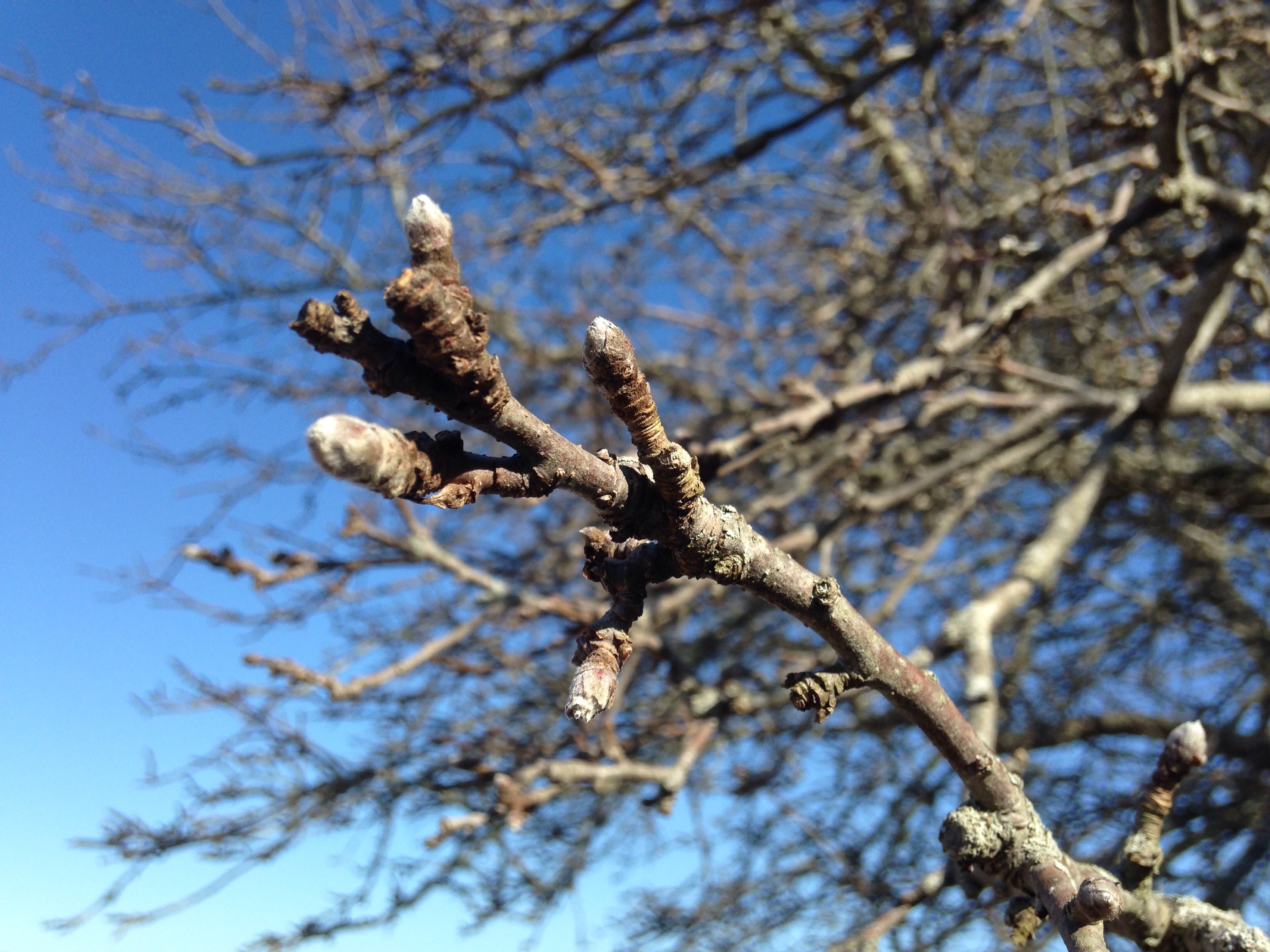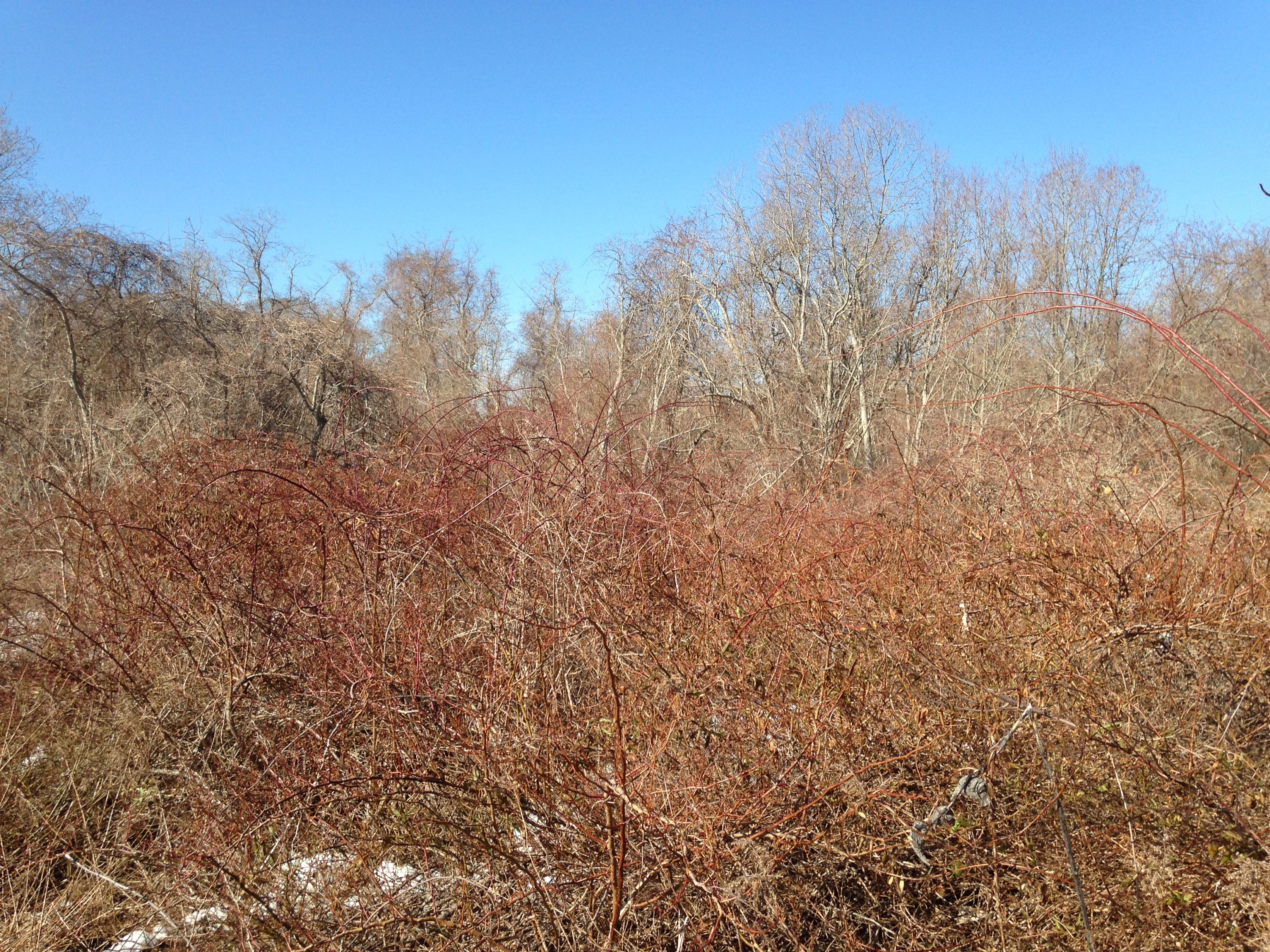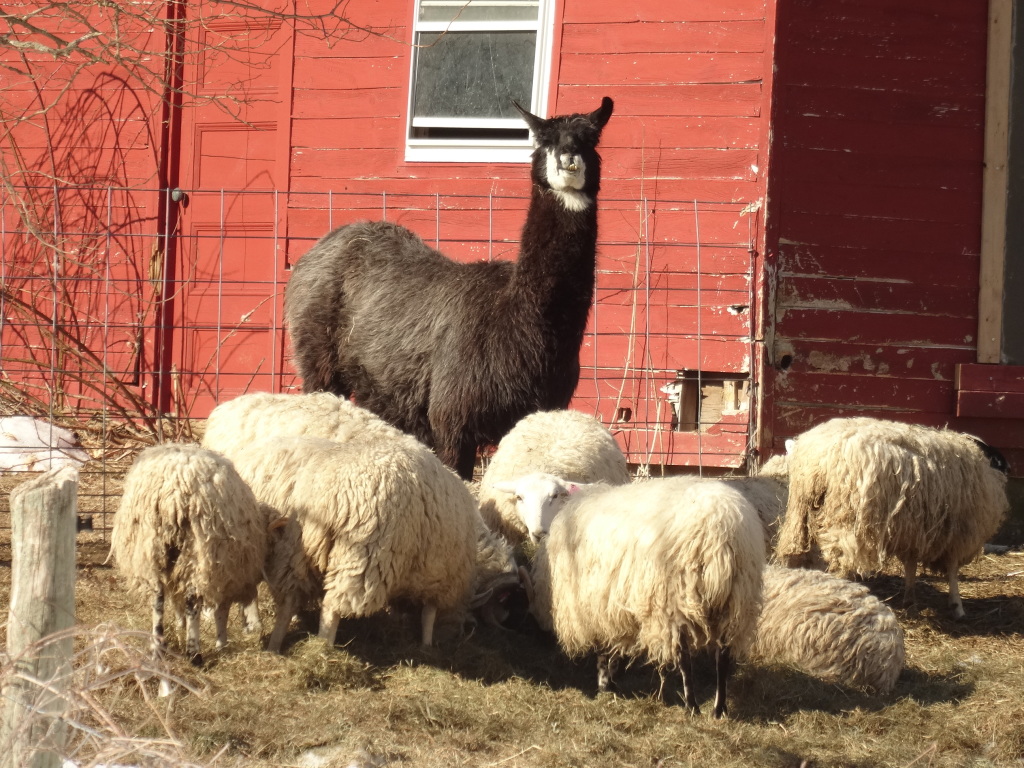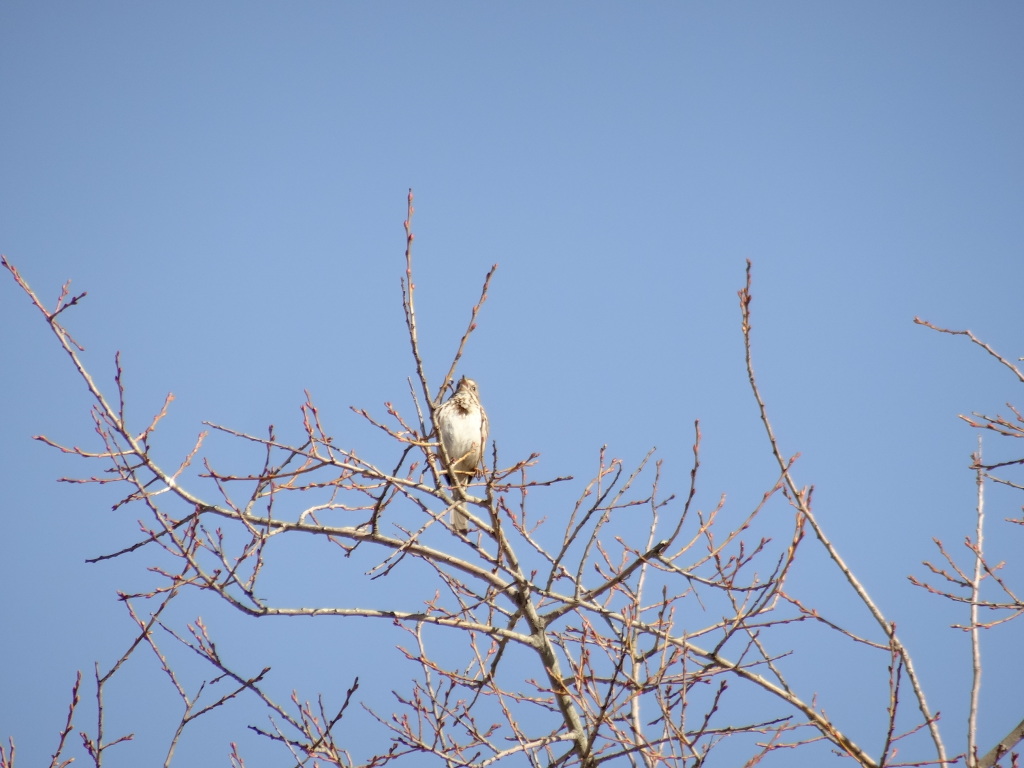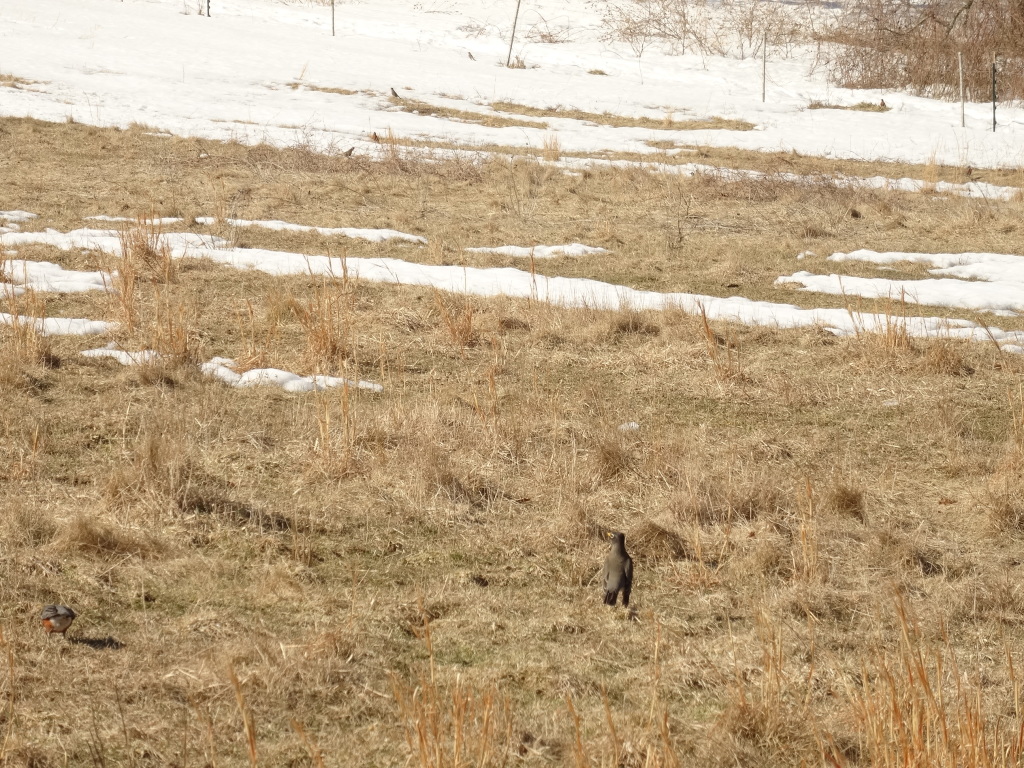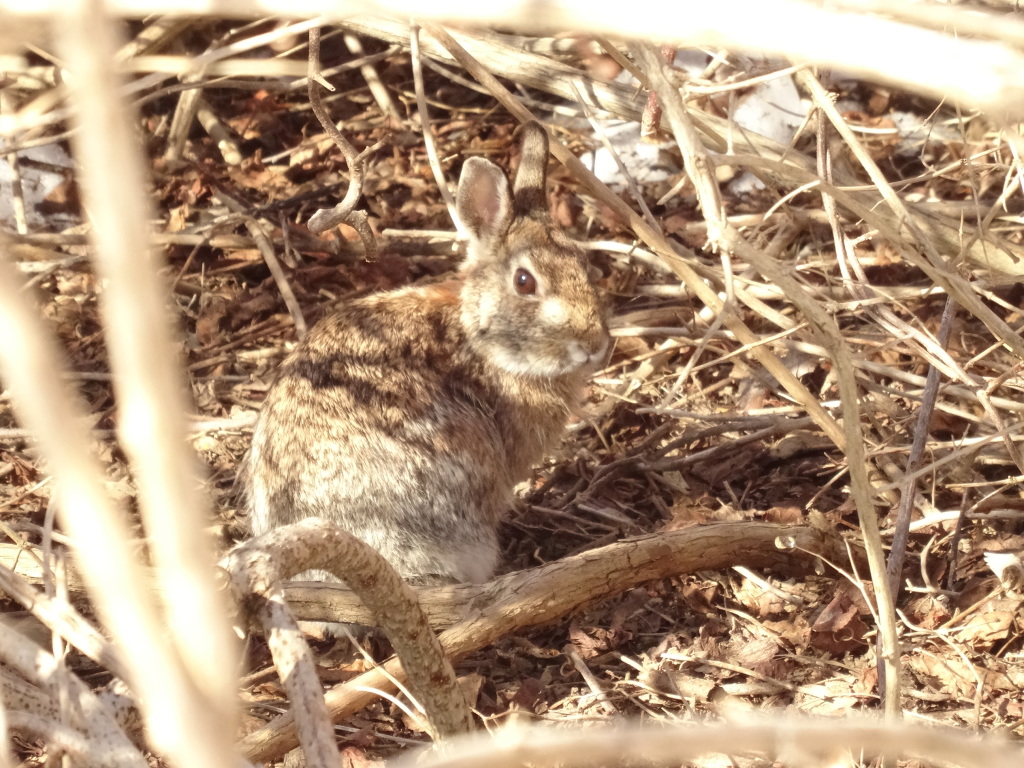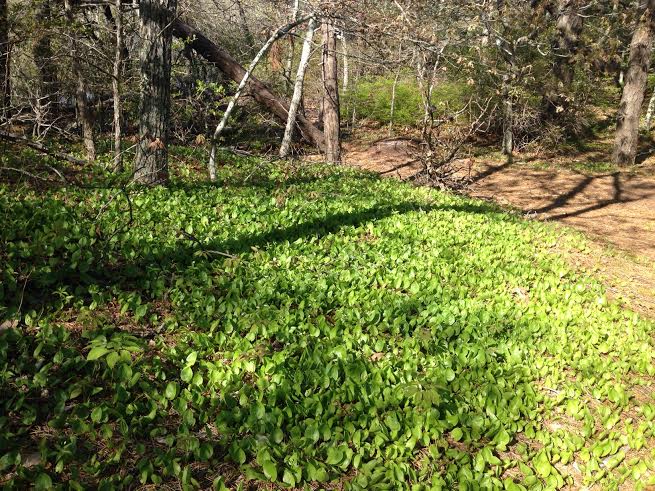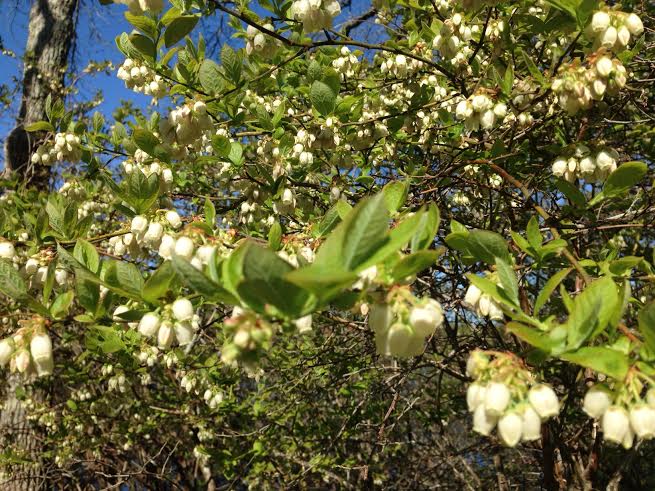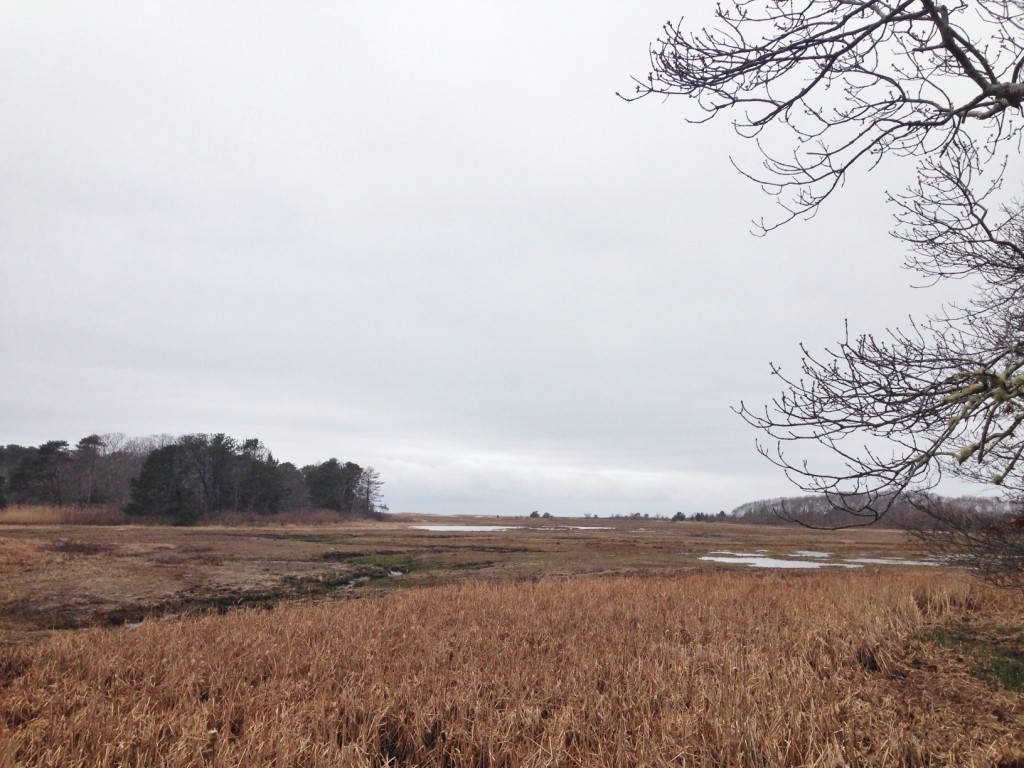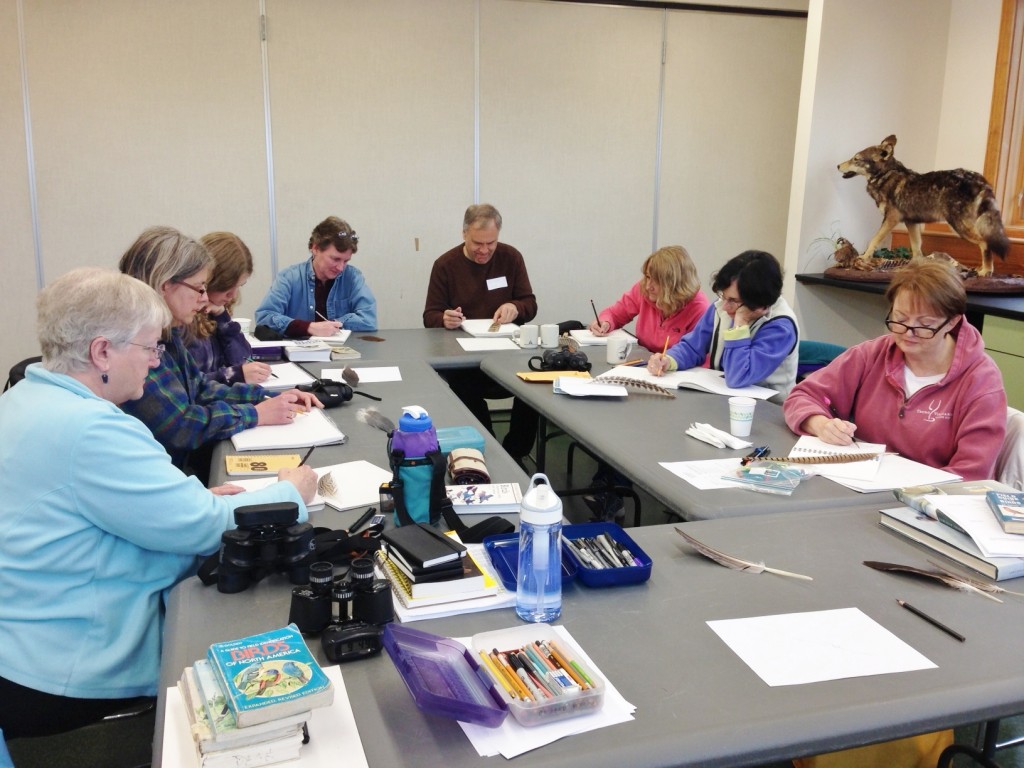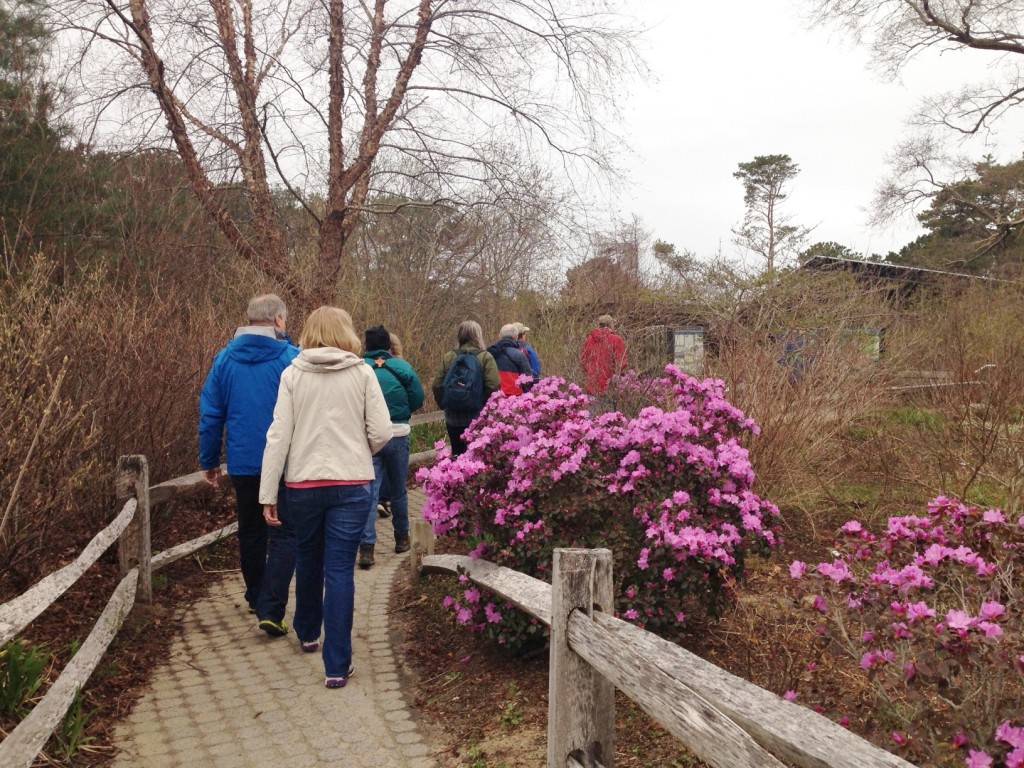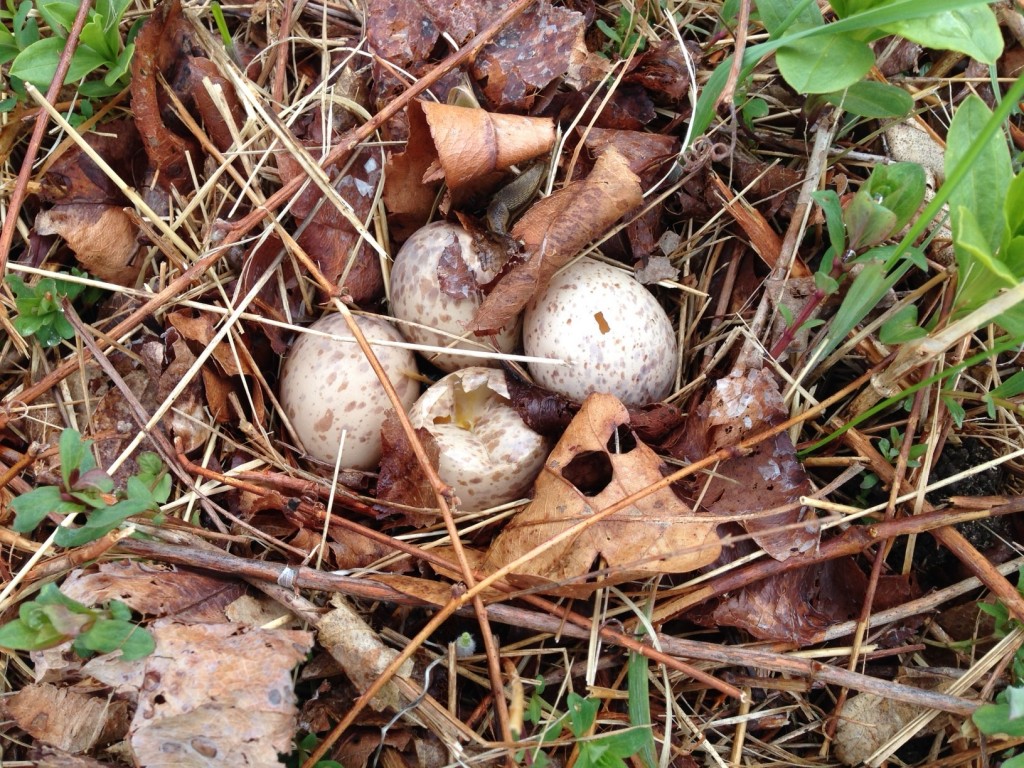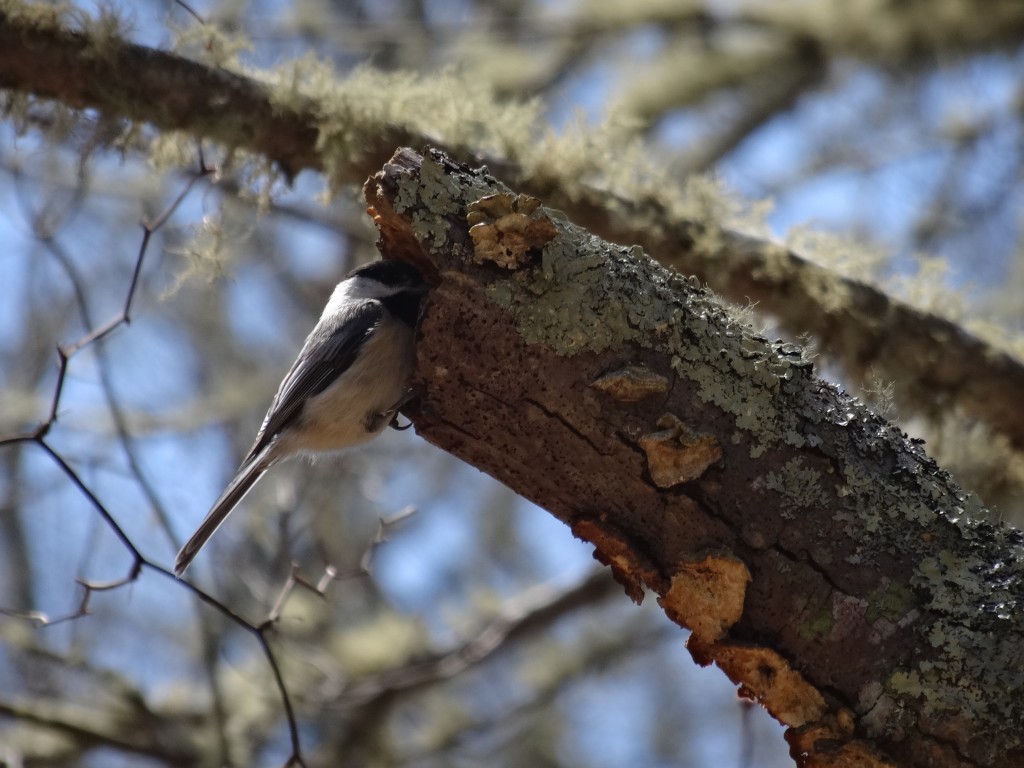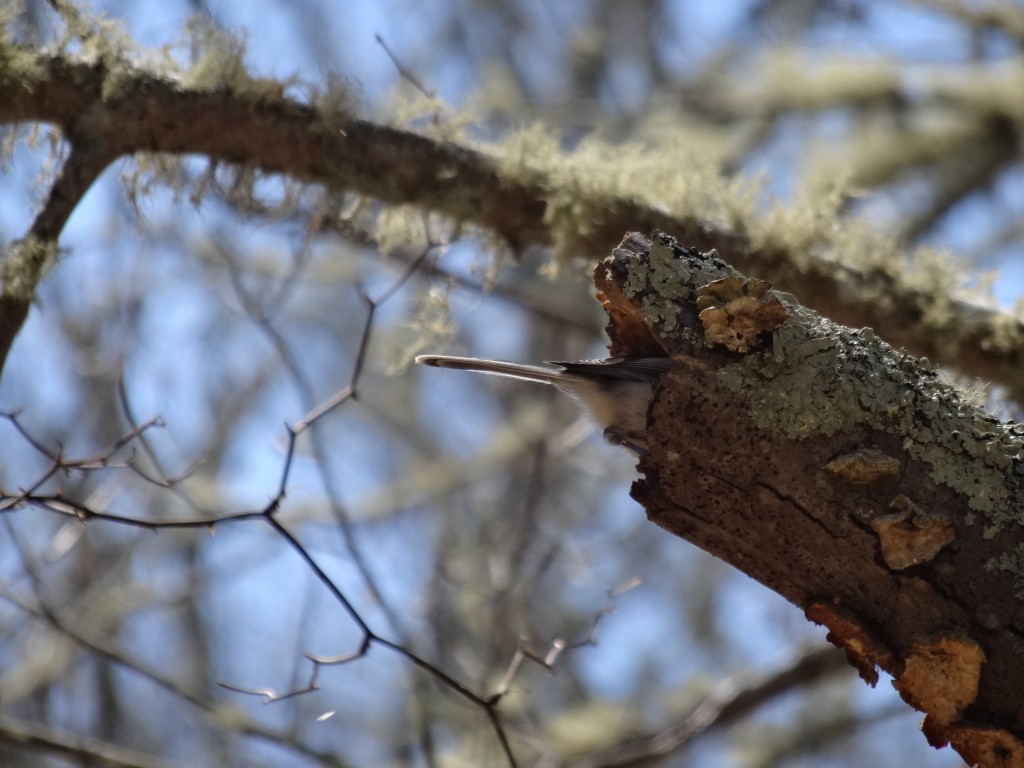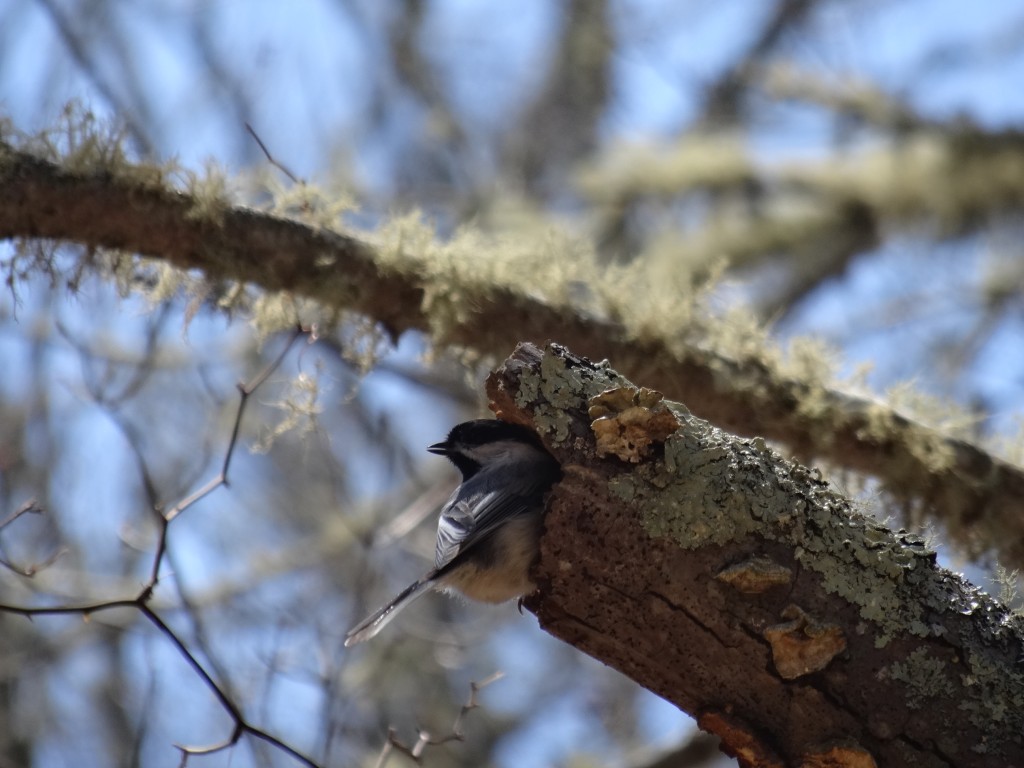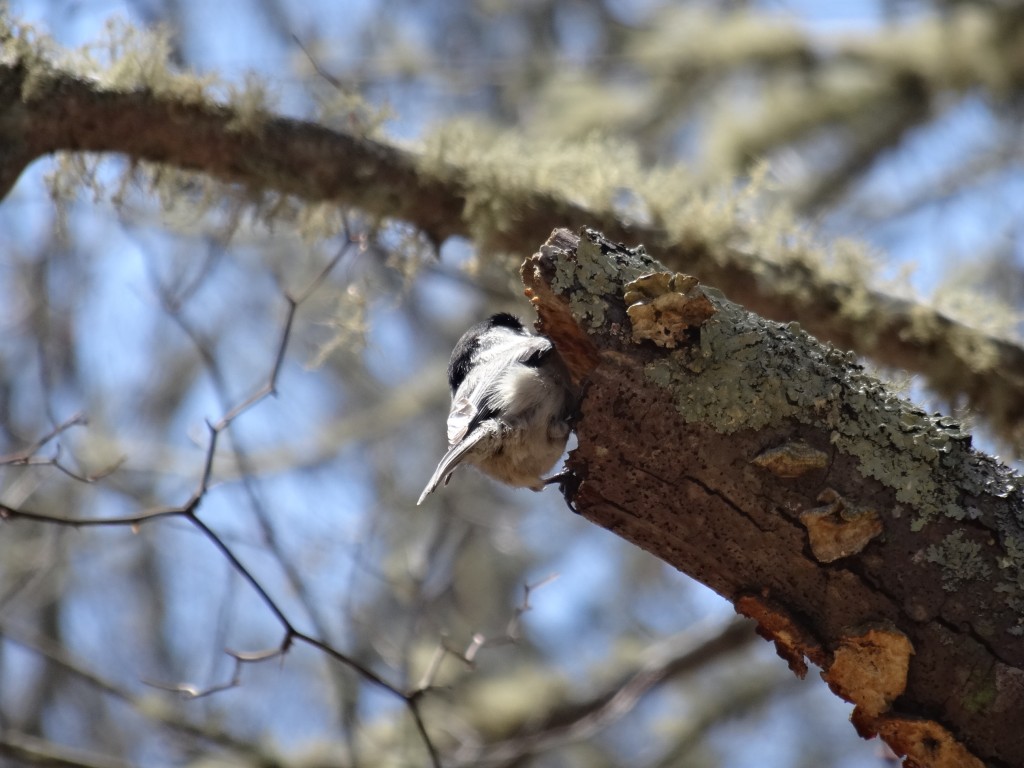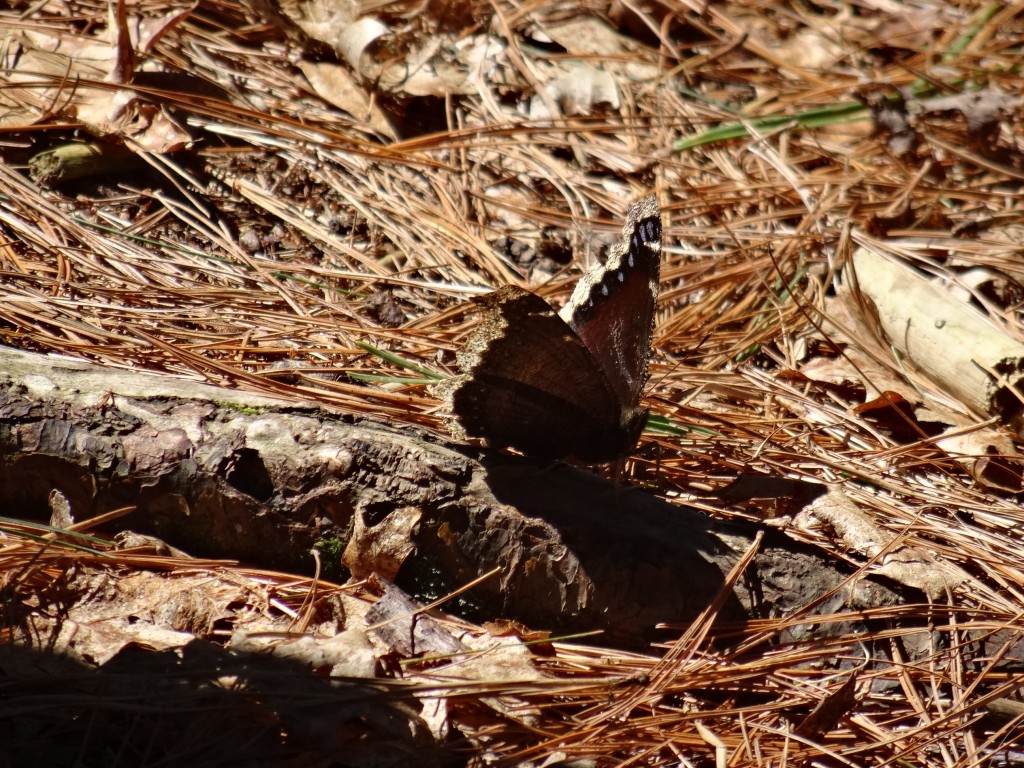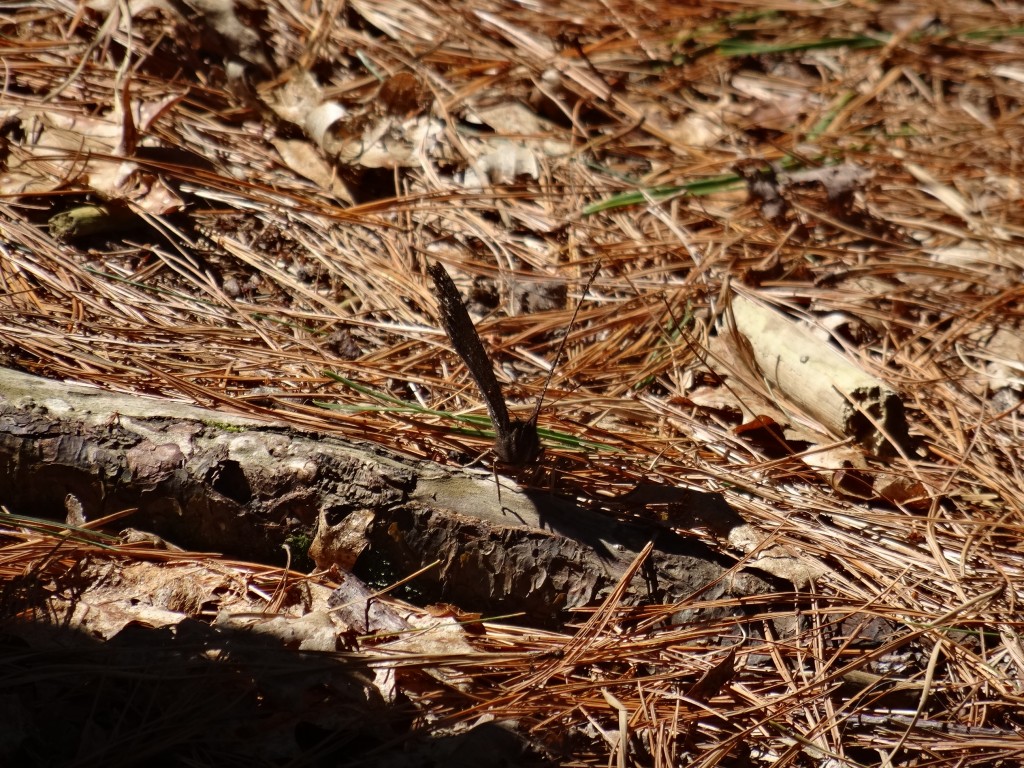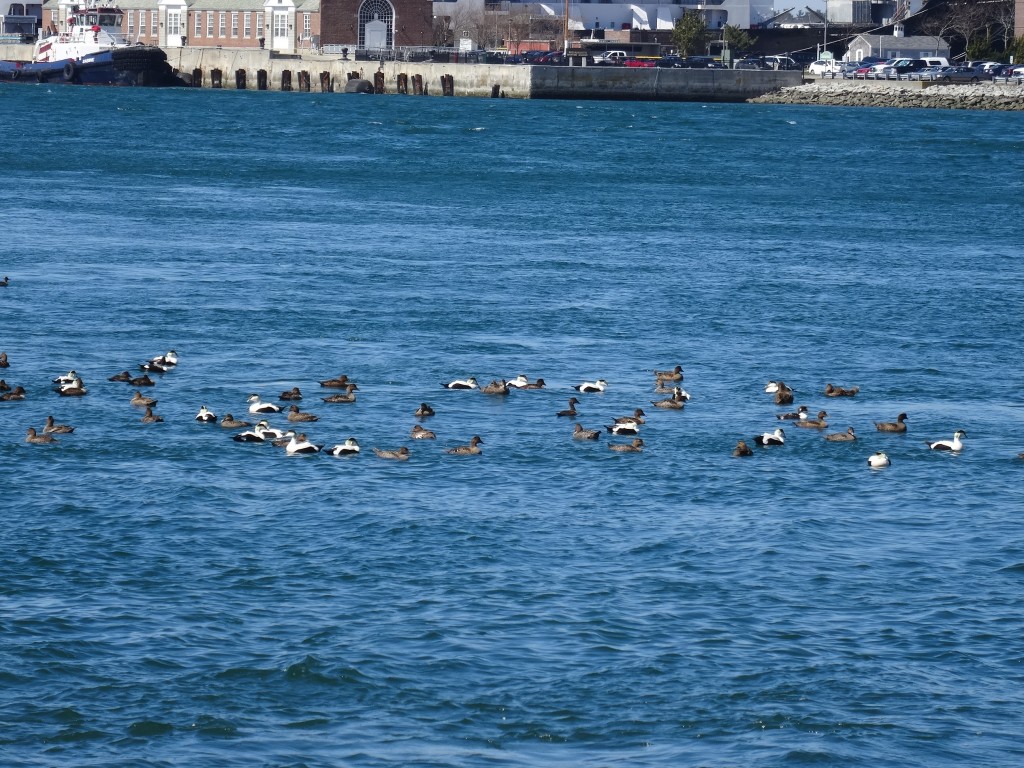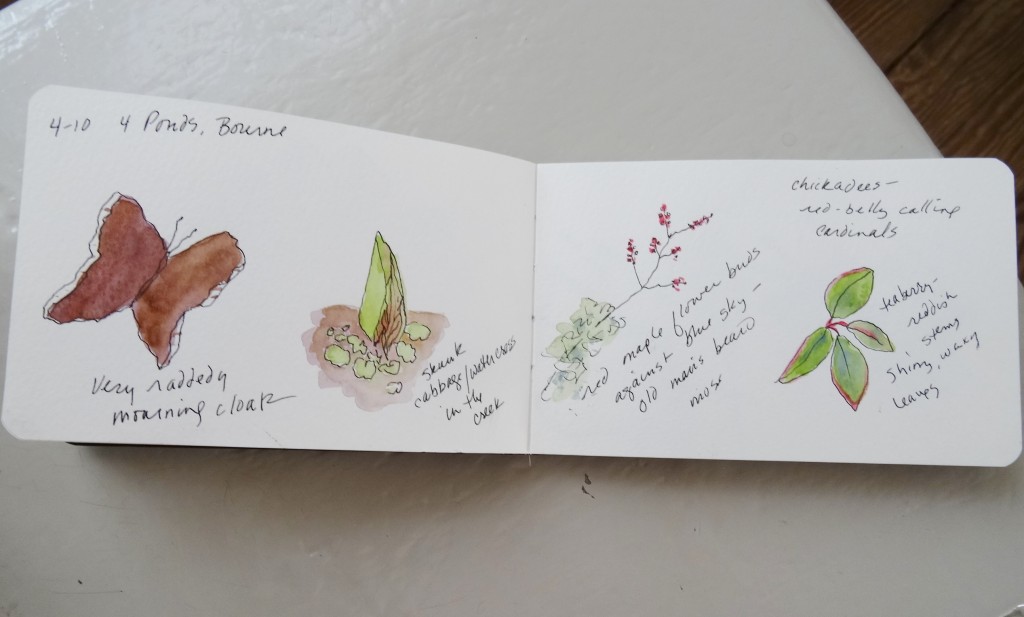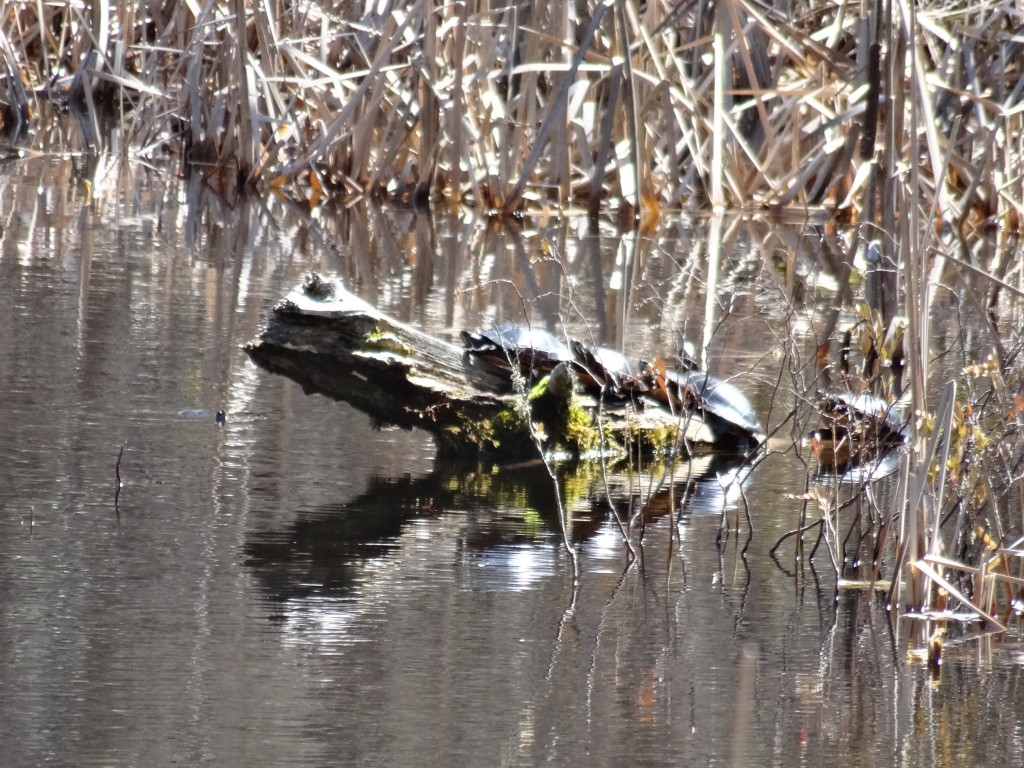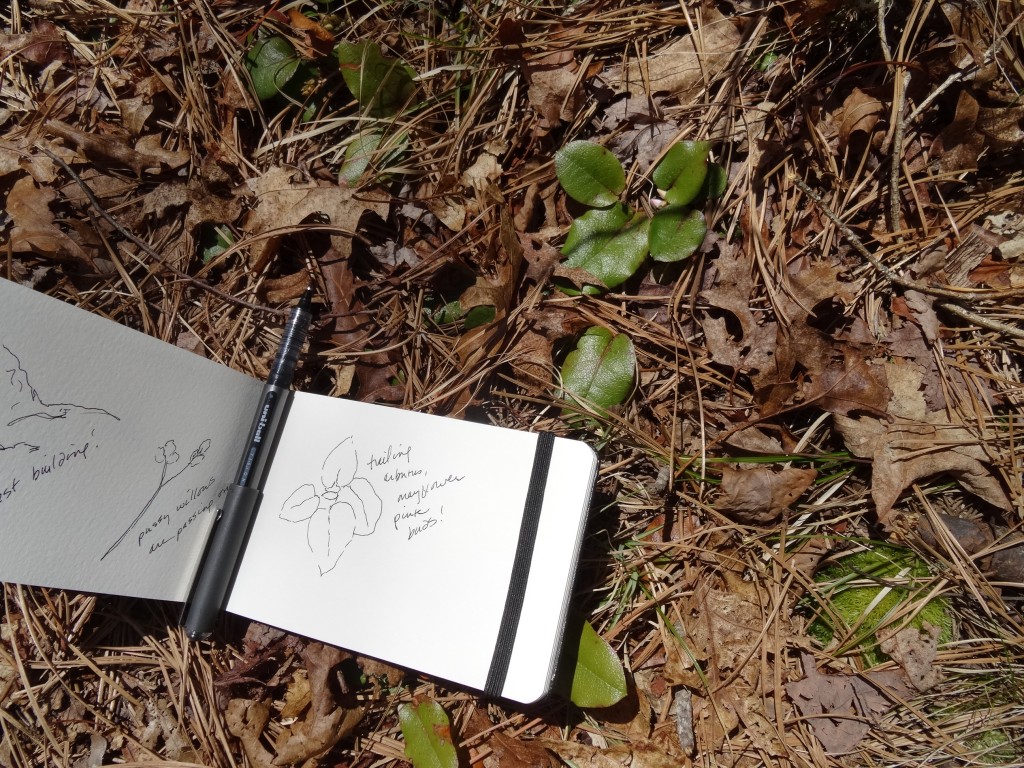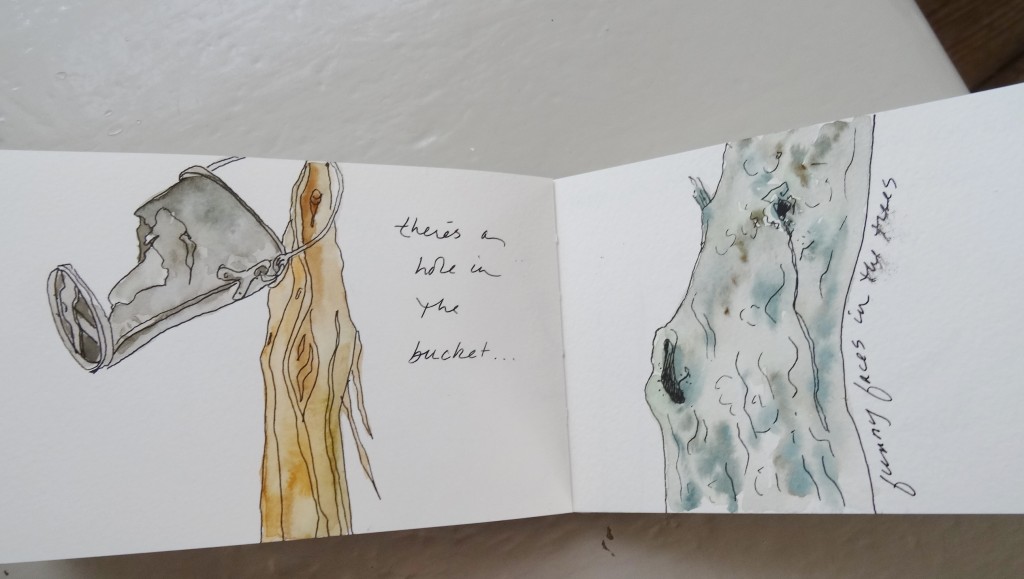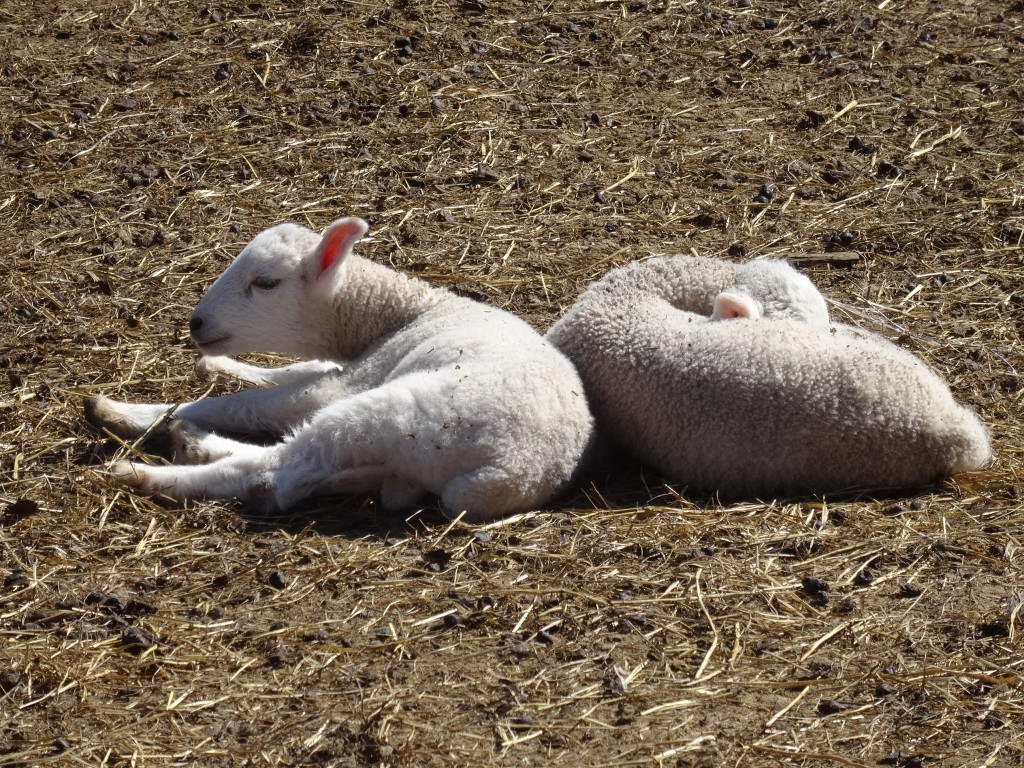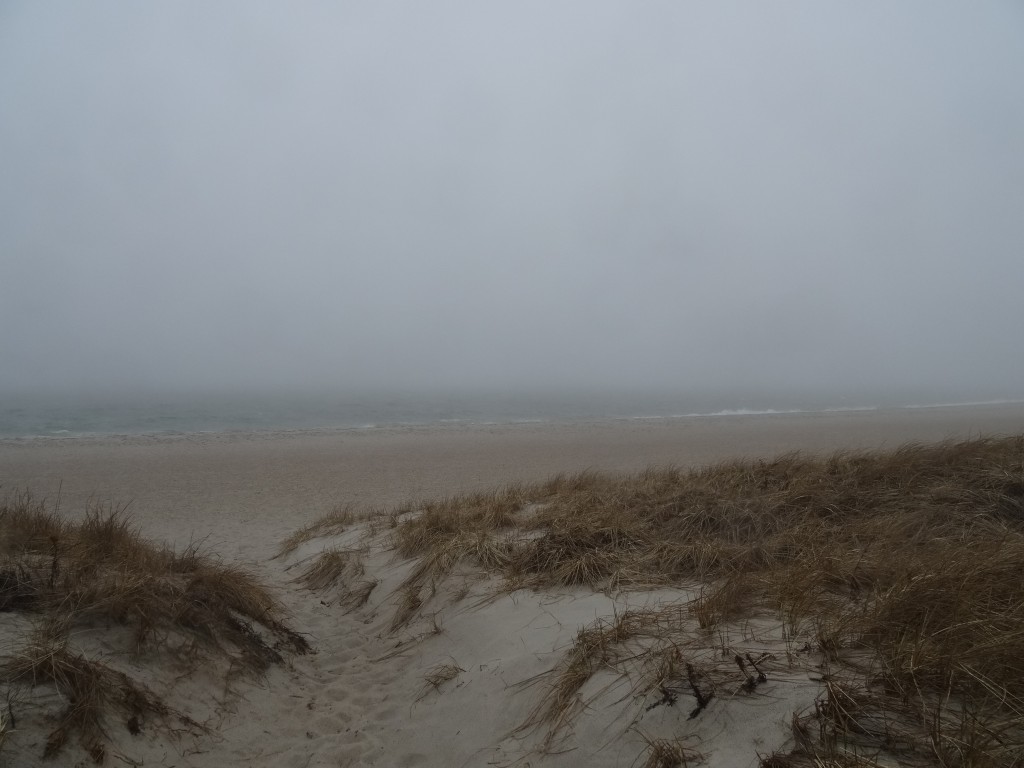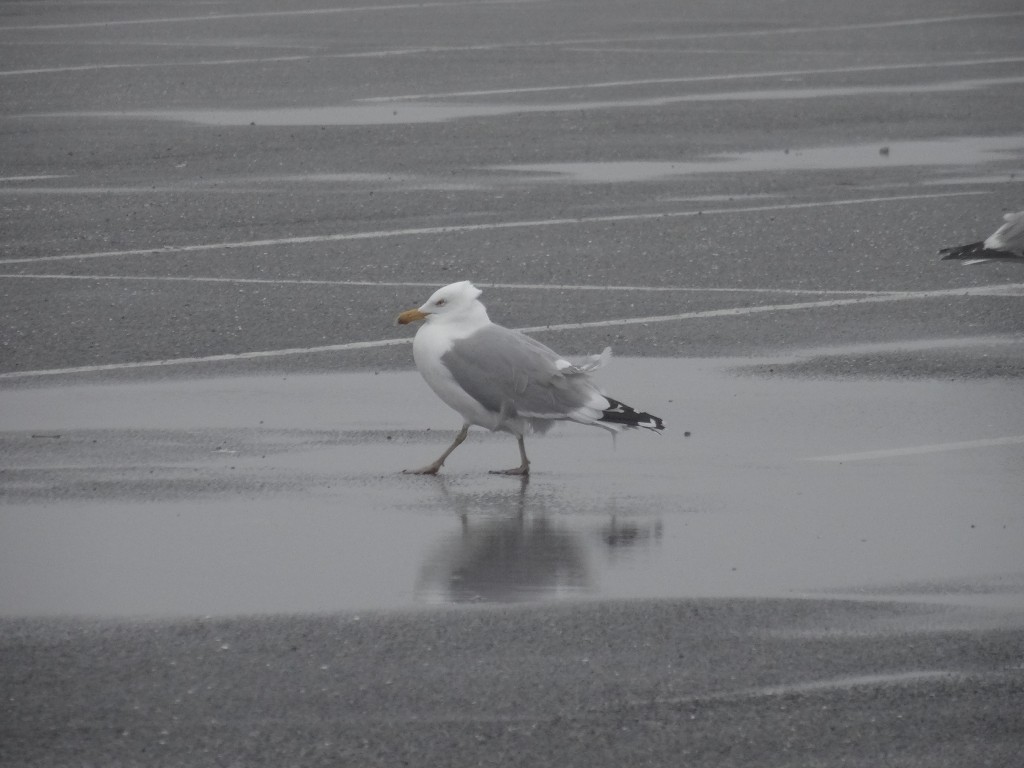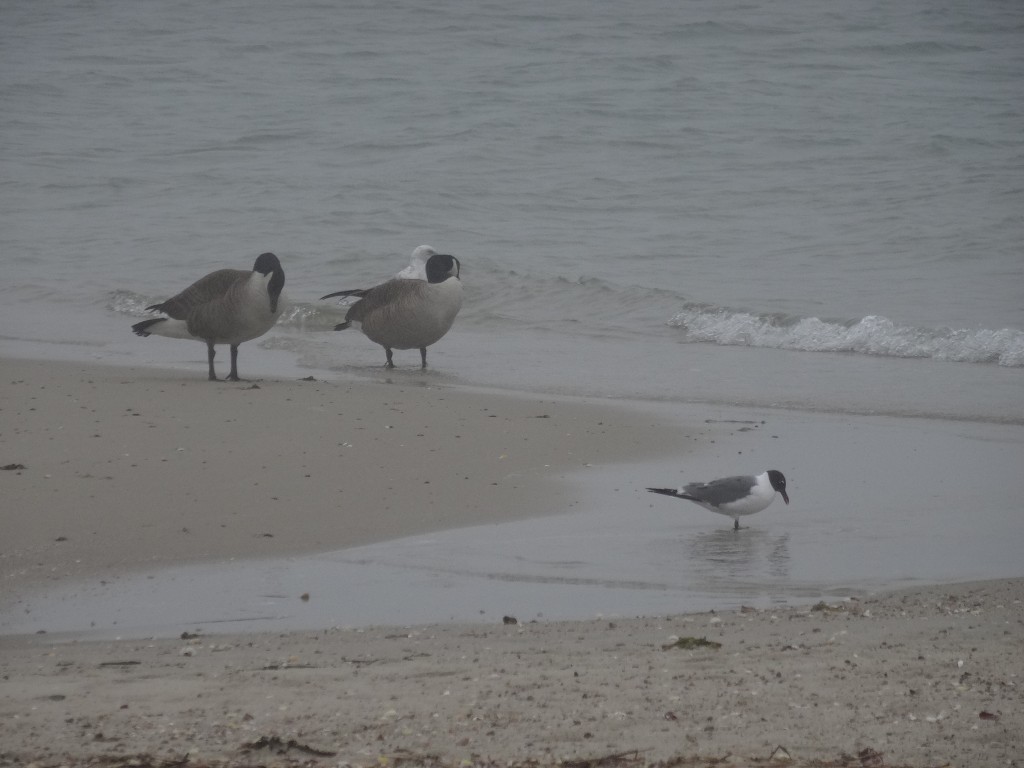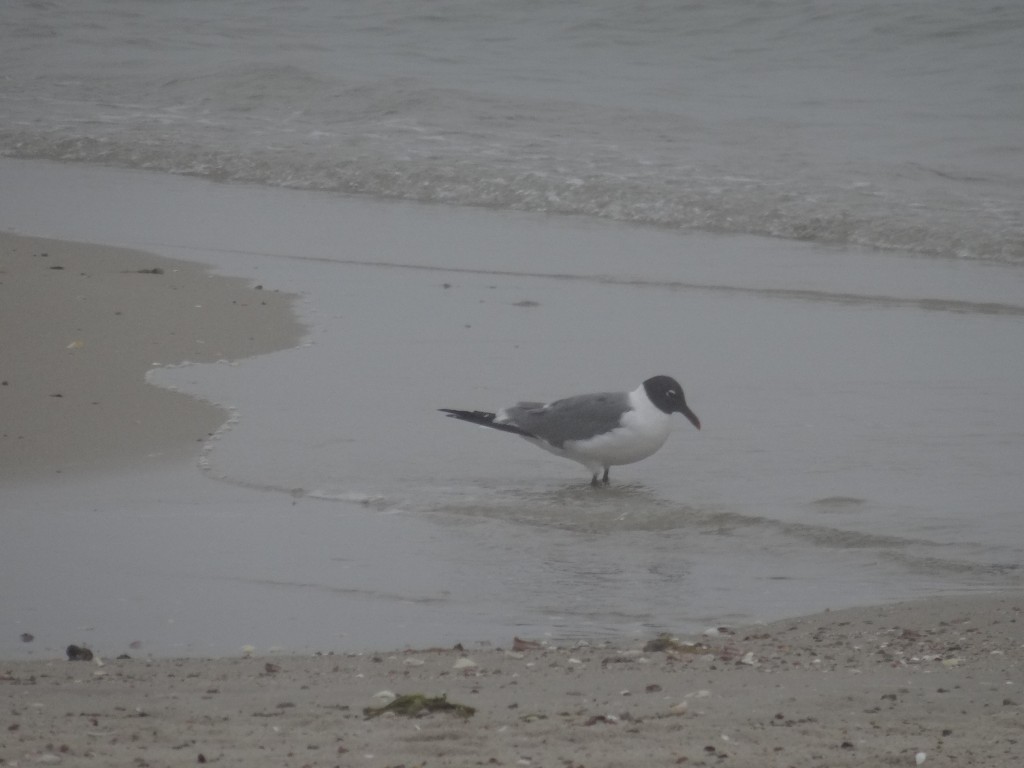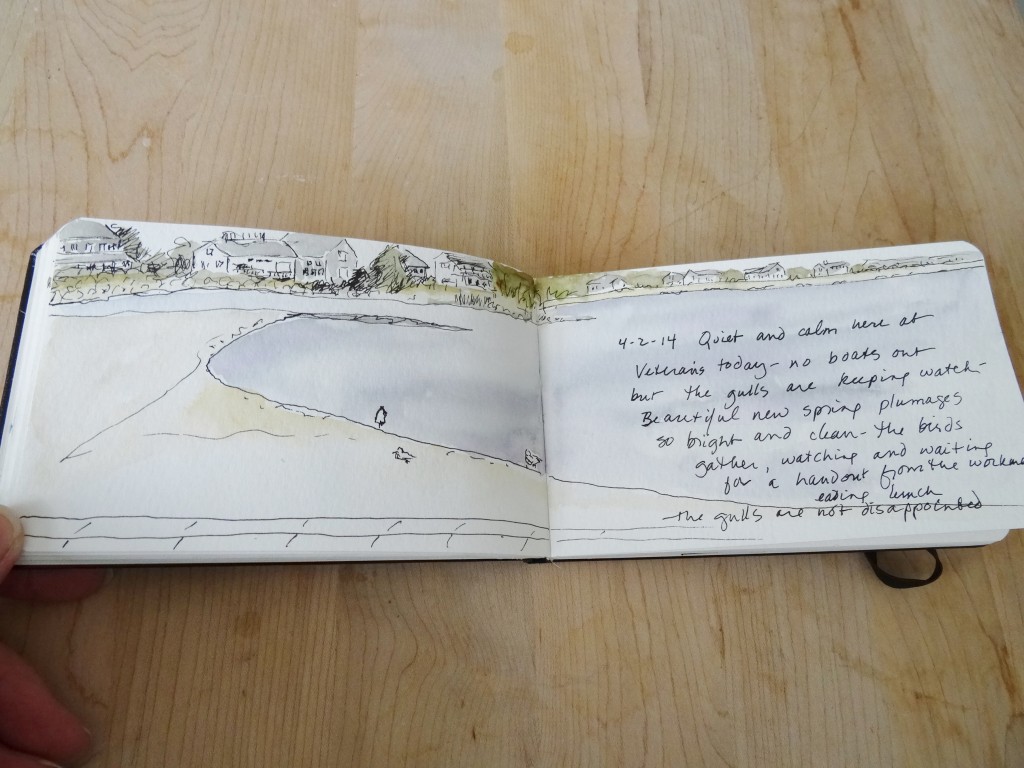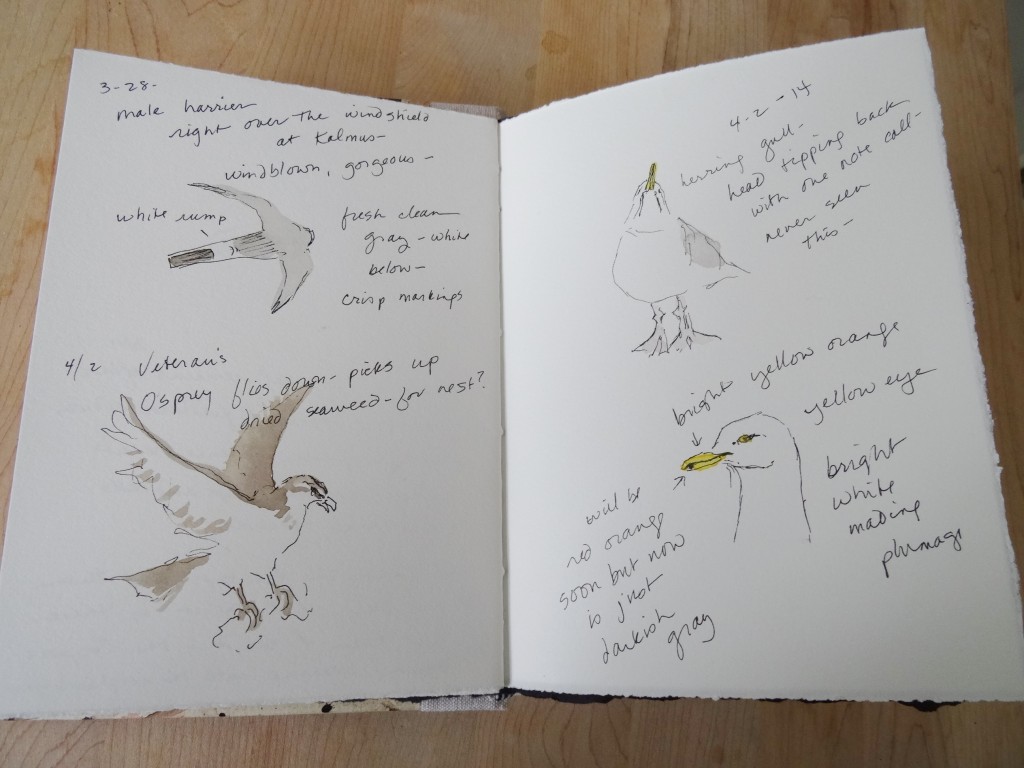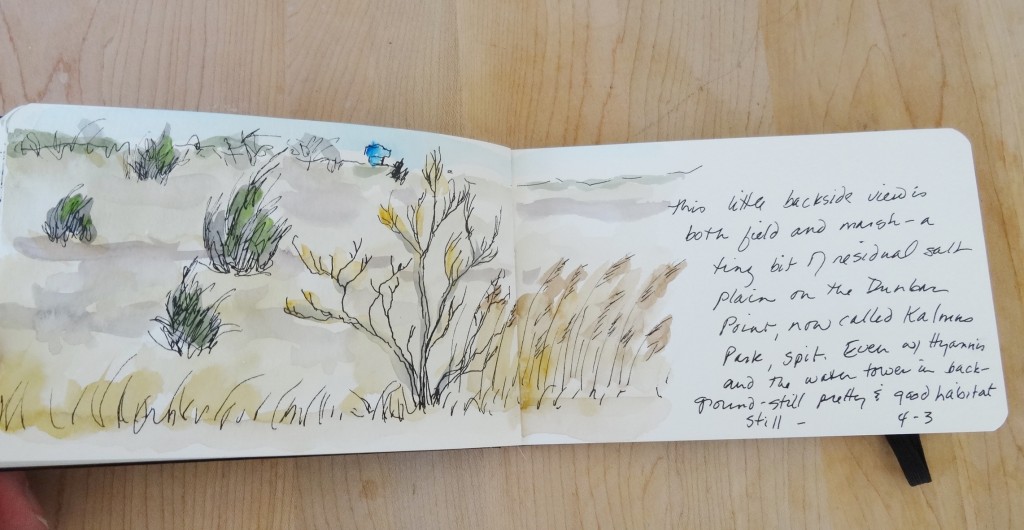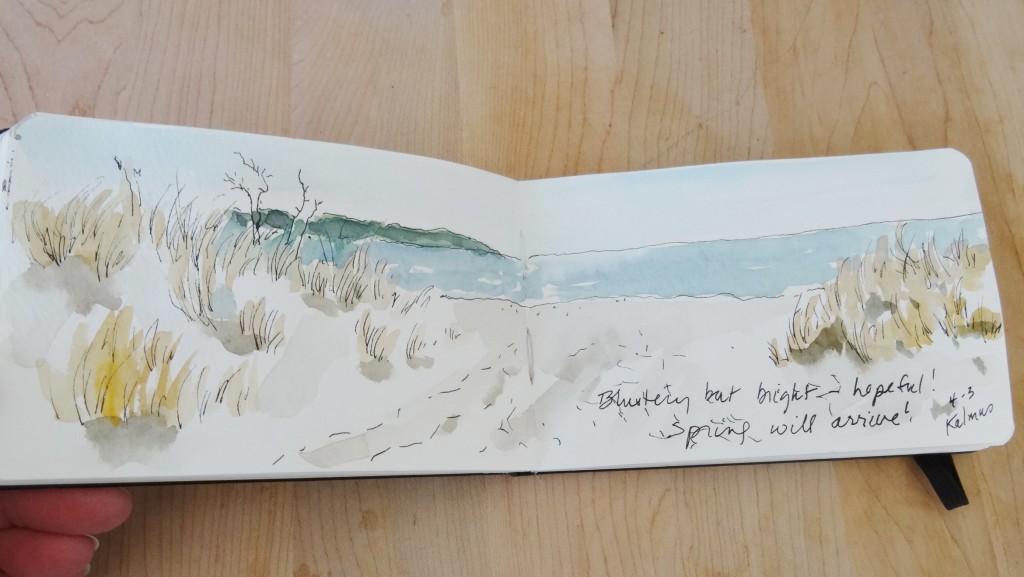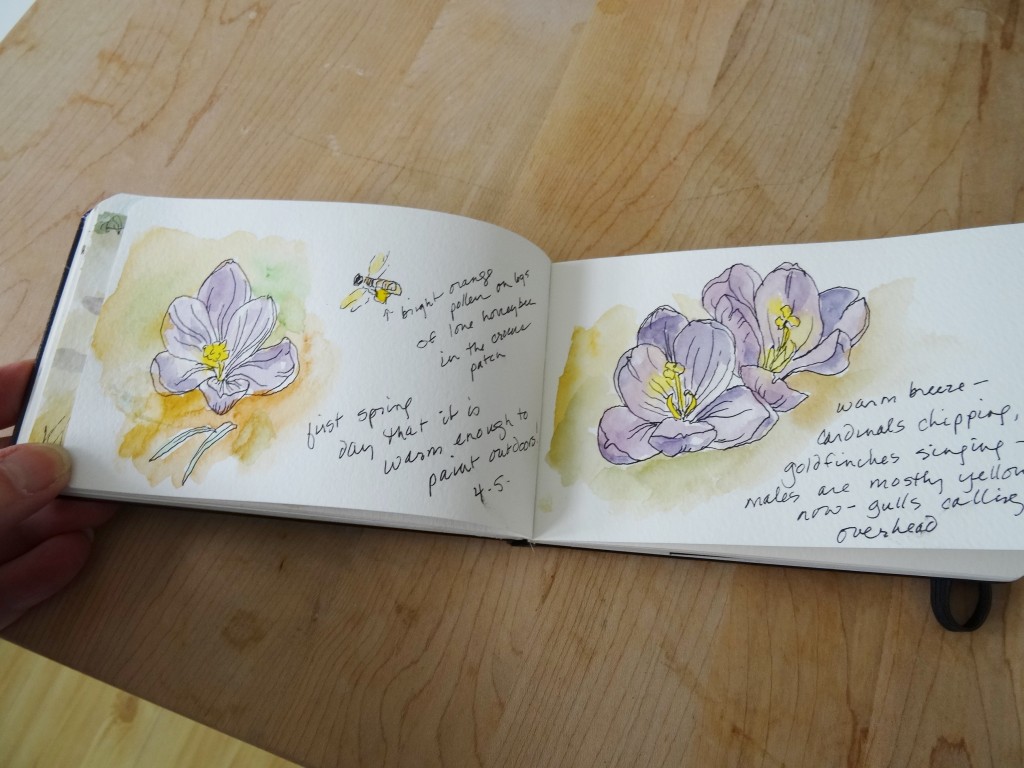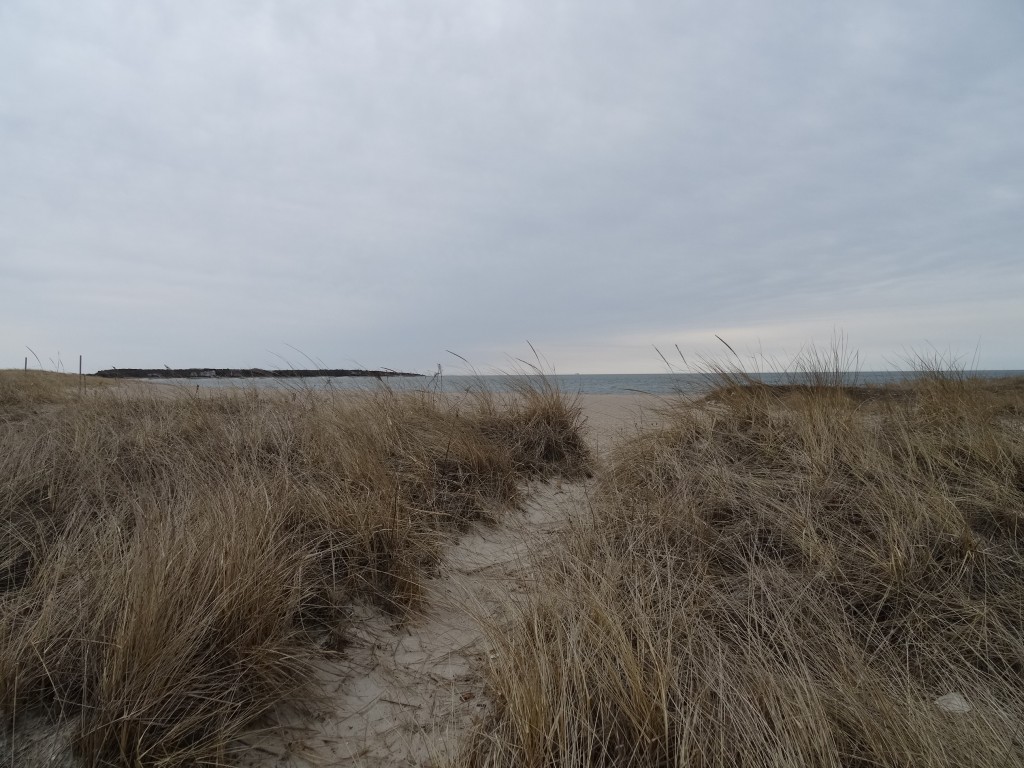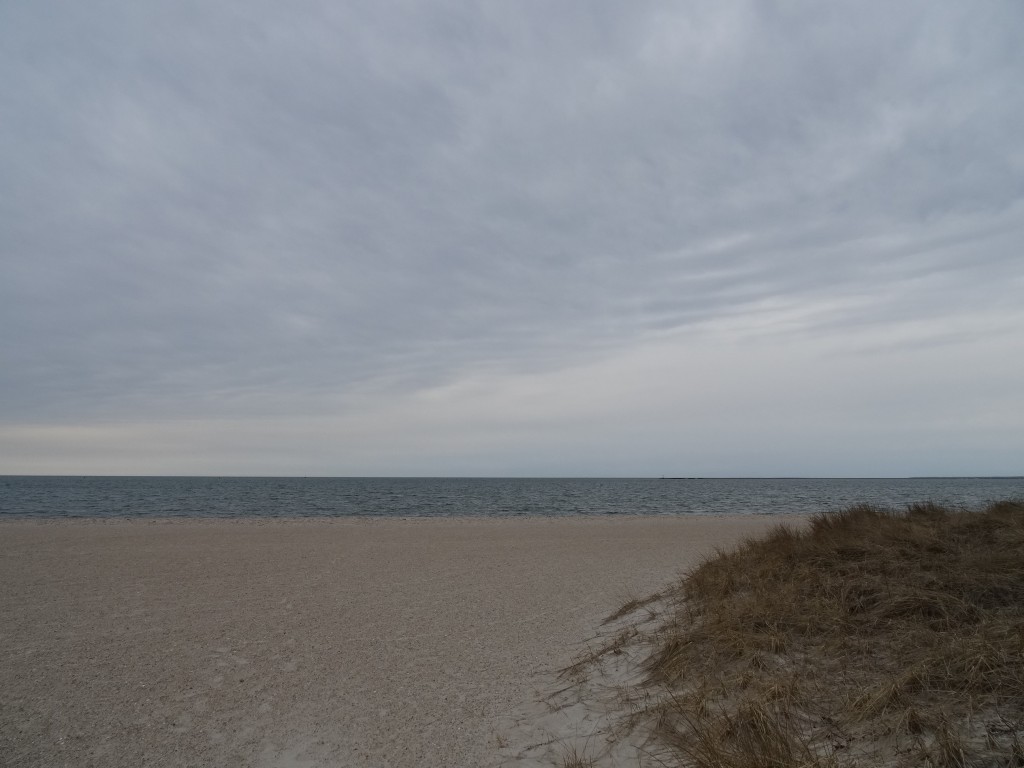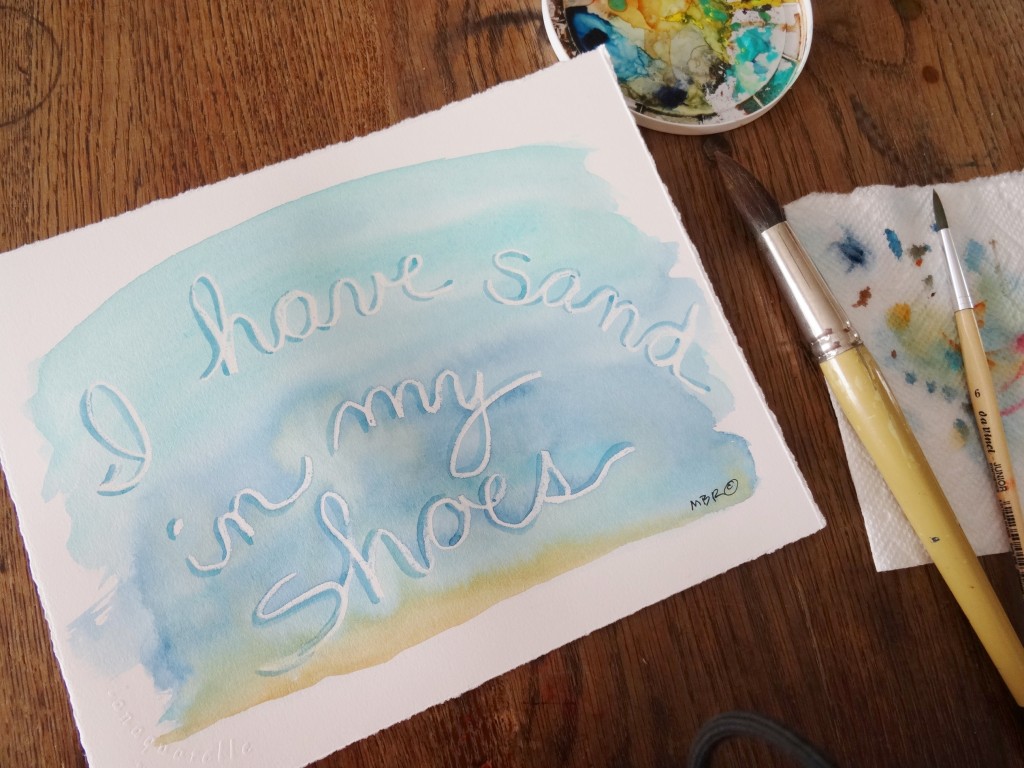No, you didn’t read that wrong….I sort of garden with weeds. I can’t help it. I sort of like the cheekiness of weeds. They grow in spite of all our best efforts to keep them down. They’re tough. They don’t need much and yet they flower profusely. To be honest, I haven’t used anything stronger than my own hands, clippers and a trowel to control the weeds on my property in the almost 30 years since I’ve been here. I also compost but in a rather haphazard way so I have all sorts of interesting plants popping up all over.
This is my vegetable garden. In the last few years it has been taken over by strawberries, red clover, evening primrose and believe it or not, tomatoes thrived here last summer. This winter I moved the bird feeders over by the garden but soon I will be taking those down for the summer. I have actually transplanted most of the strawberries and cleared most of the violets and other things that moved in this spring. I will be planting other things there over the next few weeks after I turn it all over, add compost and manure and clean it up a bit.
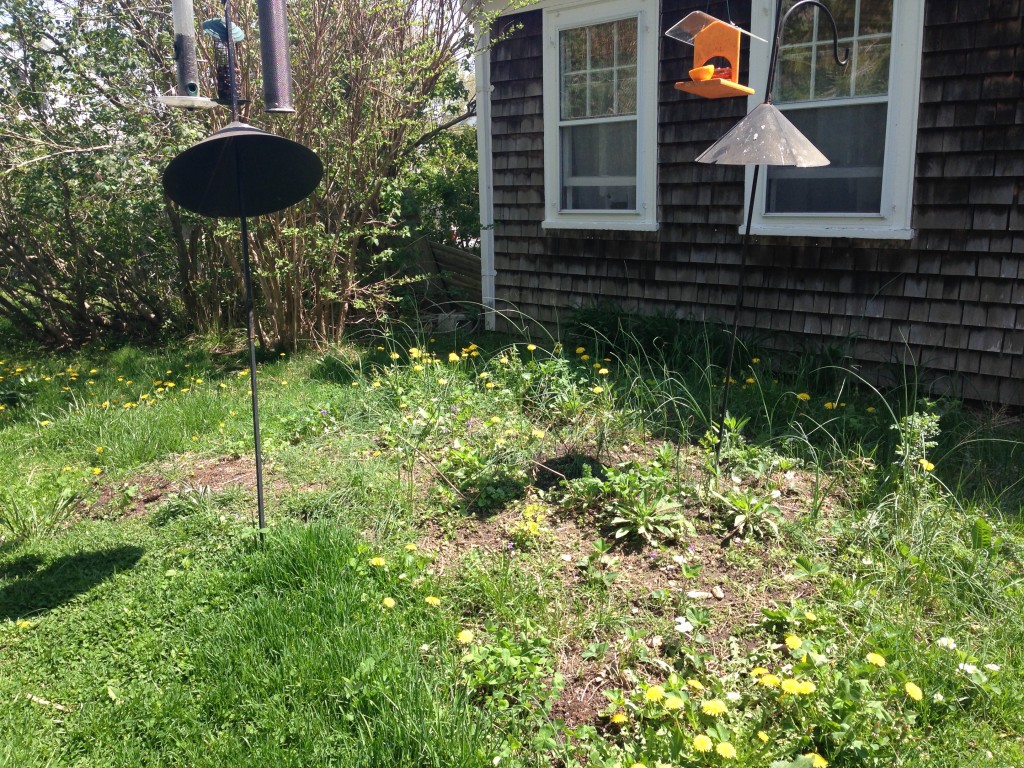
When we moved into the house almost 30 years ago there were violets in one tiny part of the yard and I happily transplanted them around, hoping they’d spread….well, they did. So did the lilies of the valley….they are everywhere….thousands and thousands of plants.
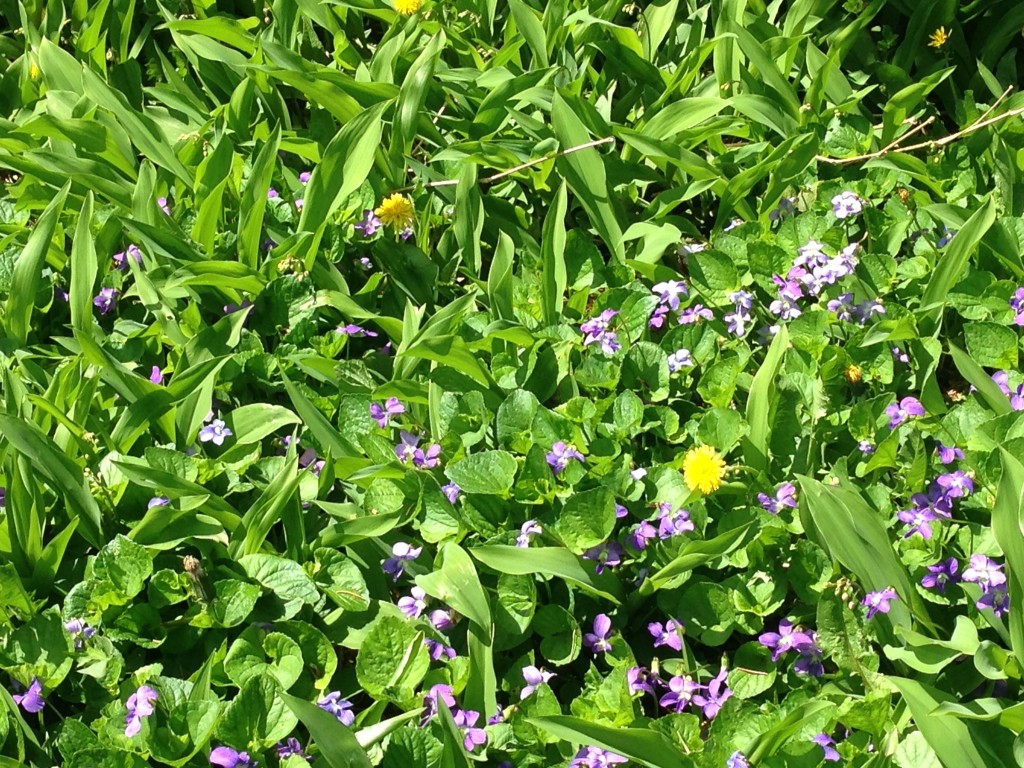
We have an ongoing battle with the dandelions. The more we dig them out, the more move in. I think we have even more than usual this year. I’m pretty sure my neighbors, who pay all sorts of fancy landscape people, hate them. Oh well. The goldfinches love them and so do I. We do try and dig them out but they outnumber us by thousands….
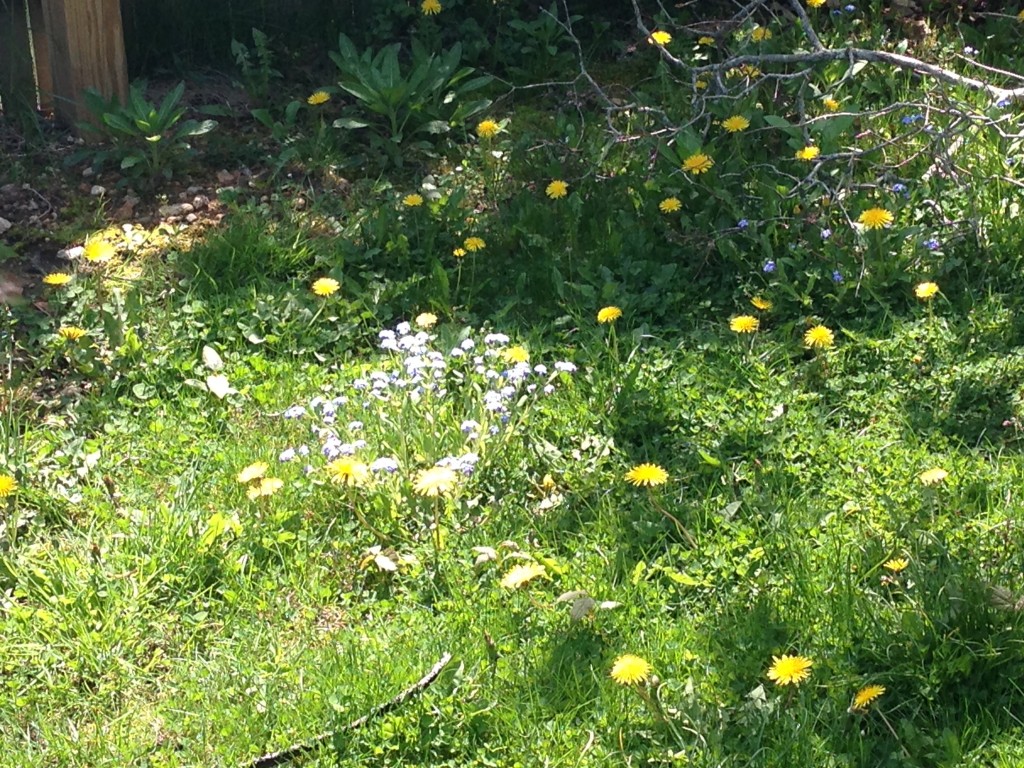 In the middle of this rather modest dandelion patch (you don’t want to see the big ones) you will see some of my runaway forget-me-nots. I planted a few of these a few years back and now they are popping up all over. I like them. There will be no mowing where they are flowering.
In the middle of this rather modest dandelion patch (you don’t want to see the big ones) you will see some of my runaway forget-me-nots. I planted a few of these a few years back and now they are popping up all over. I like them. There will be no mowing where they are flowering.
This is one part of one of my herb gardens but they all share the same neighbors. I will pull out some of these–especially the stock since it already grows in abundance elsewhere in my yard. I also will pull out a lot of the Queen Anne’s lace and evening primrose since I have a lot of those, too, but I will also leave some. The butterflies, bees and birds all love them and they serve as food almost all year long.
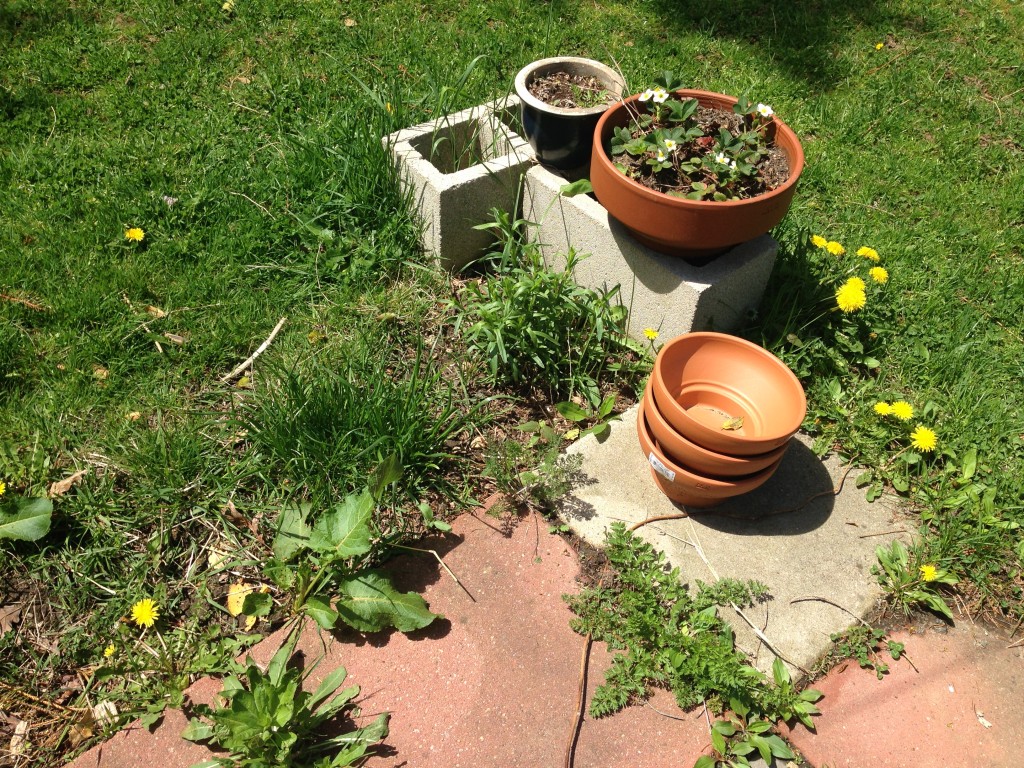
I know this hurts some of you to see, especially the really neat and compulsive among you but I garden because I love plants. For me, most weeds are beautiful and all summer long I have a yard full of bees, butterflies and birds as well as flowers. All fall and winter I have tons of wild seeds which feed the birds better than my bird feeders.
It’s true that my vegetable garden suffers a bit, but not too much. I usually grow more herbs, lettuce, swiss chard and tomatoes than I can use and if I can beat the squirrels to them, I get a good long lasting strawberry crop as well. As for the violets, red clover and dandelions? I add the young leaves to salads and the blossoms of violets and clover as well. This year I have so many dandelions in bloom all at once I may look up my great grandmother’s recipe for dandelion wine….
Our lot is tiny and in the middle of Hyannis. We have a lot that is less than one fifth of an acre yet it is full of plantings. We have spruce, maple, holly, dogwood, kousa dogwood, oak, lilac (white and purple), quince and more. It’s a busy place.
And in the middle of it all, we have orioles and hummingbirds, smack dab in the middle of town.
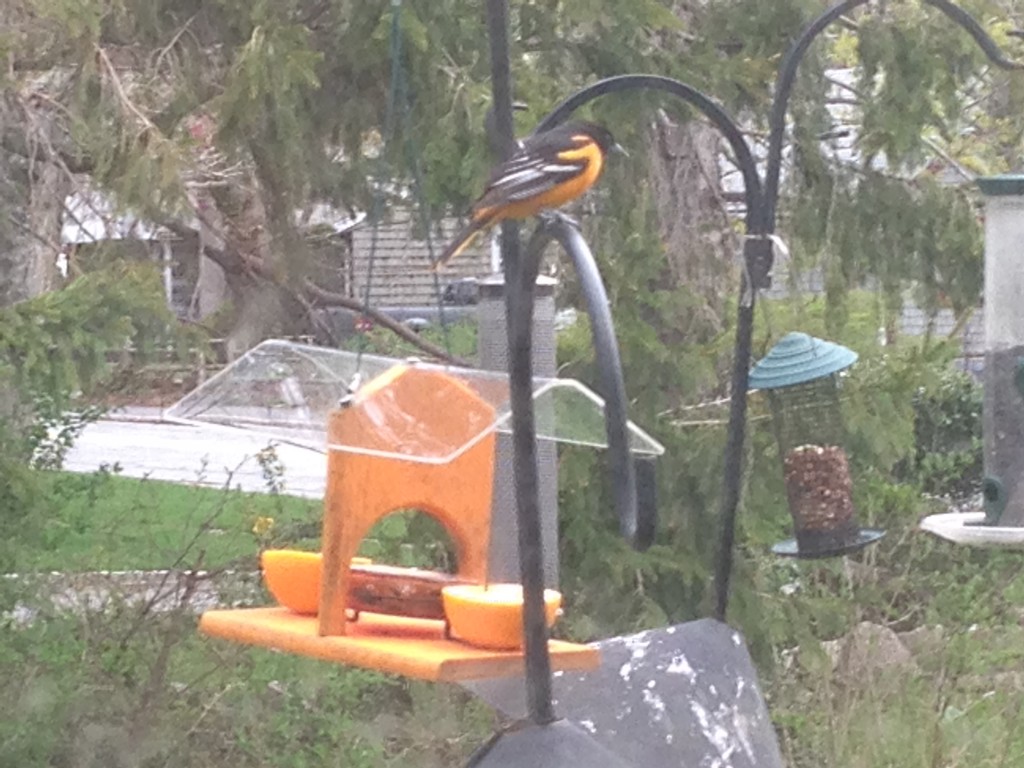
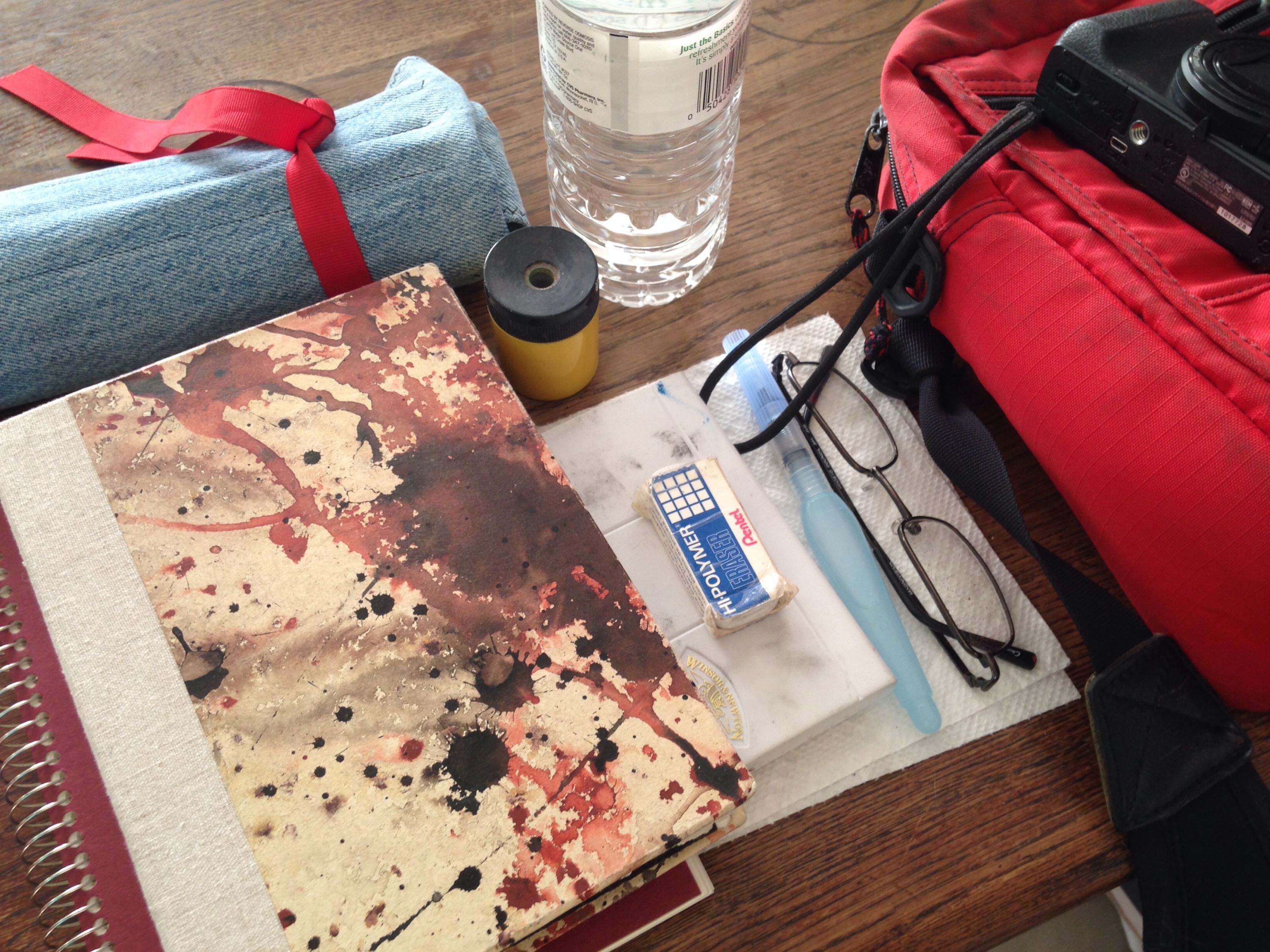
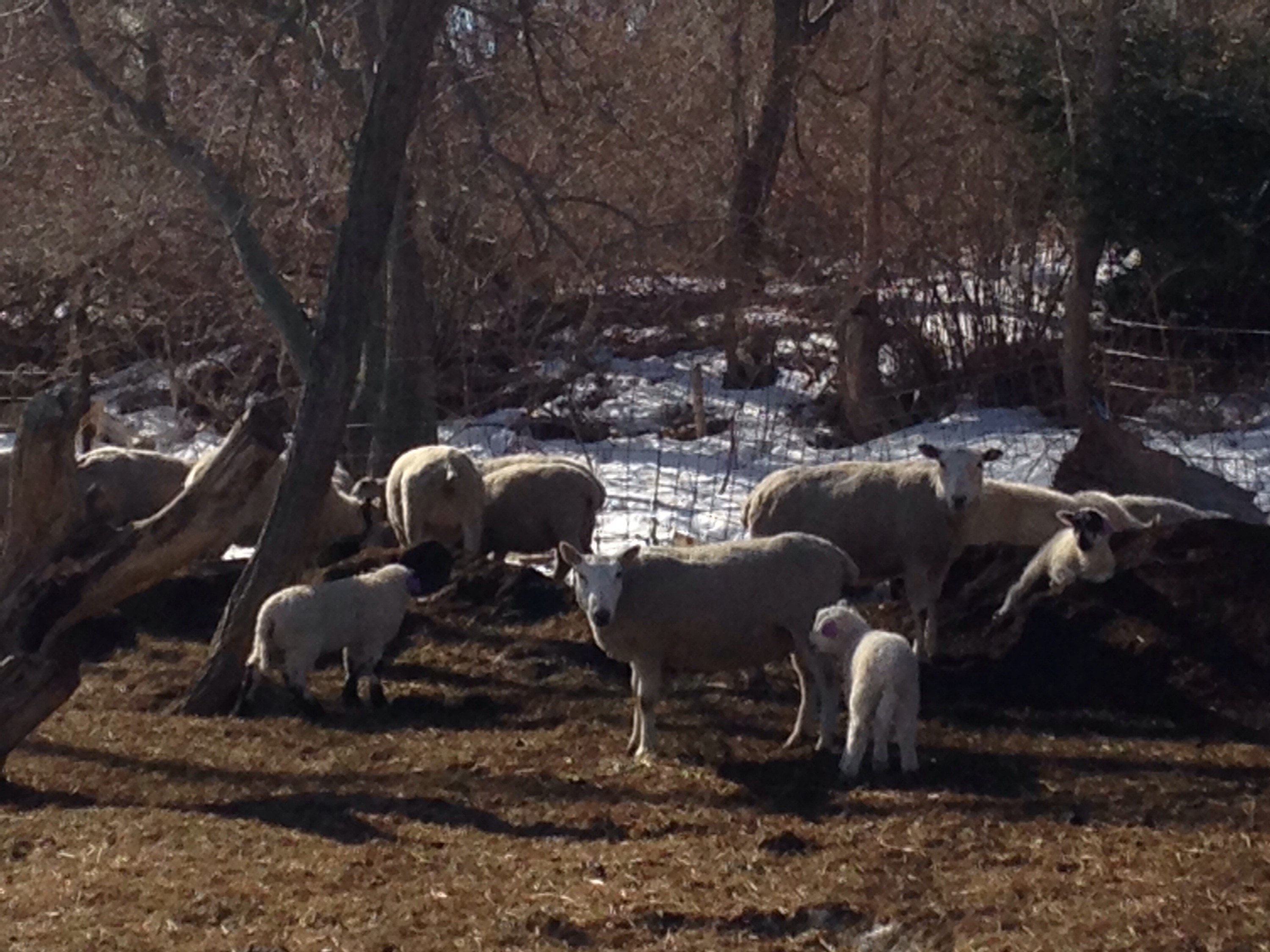
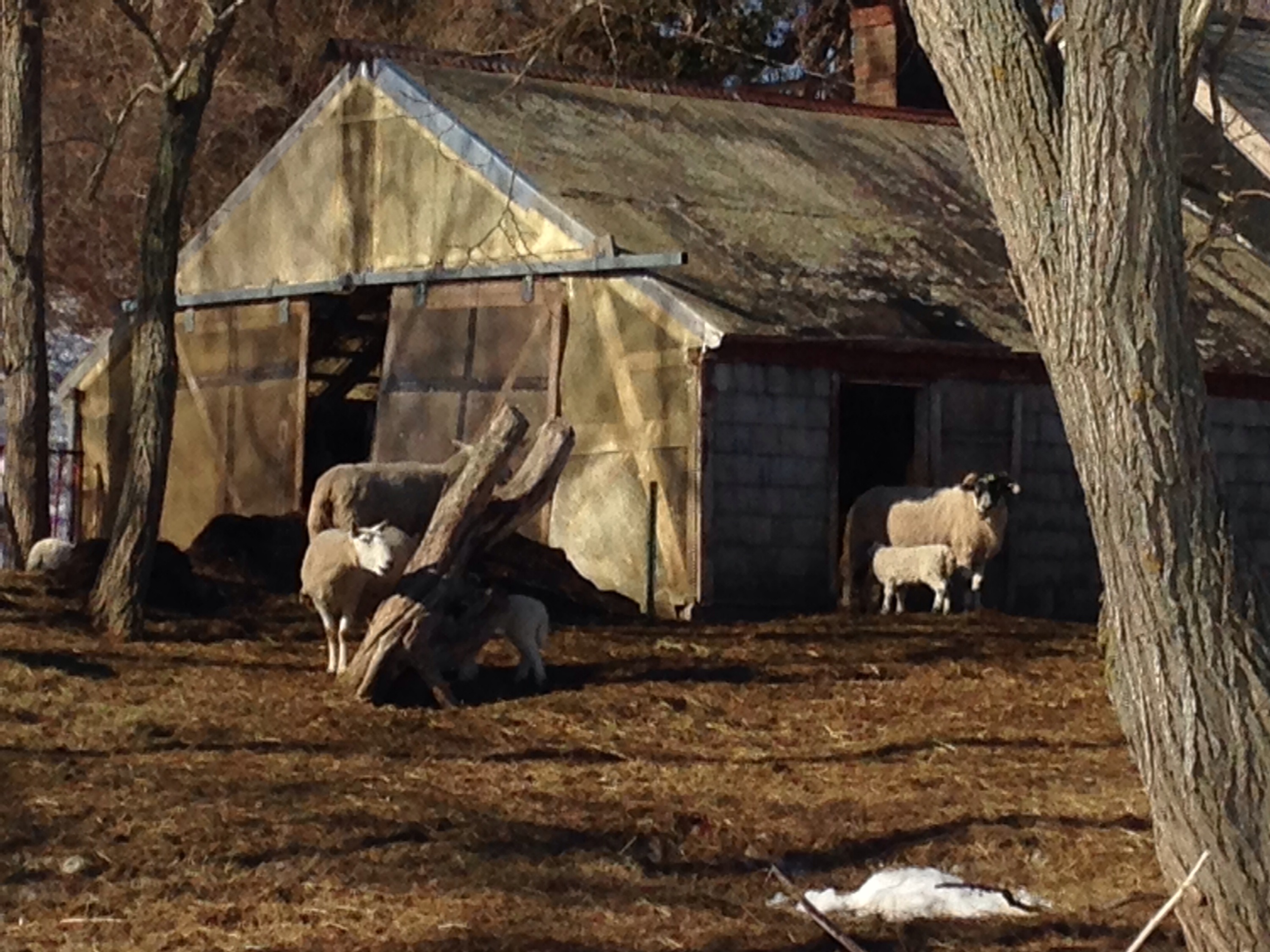
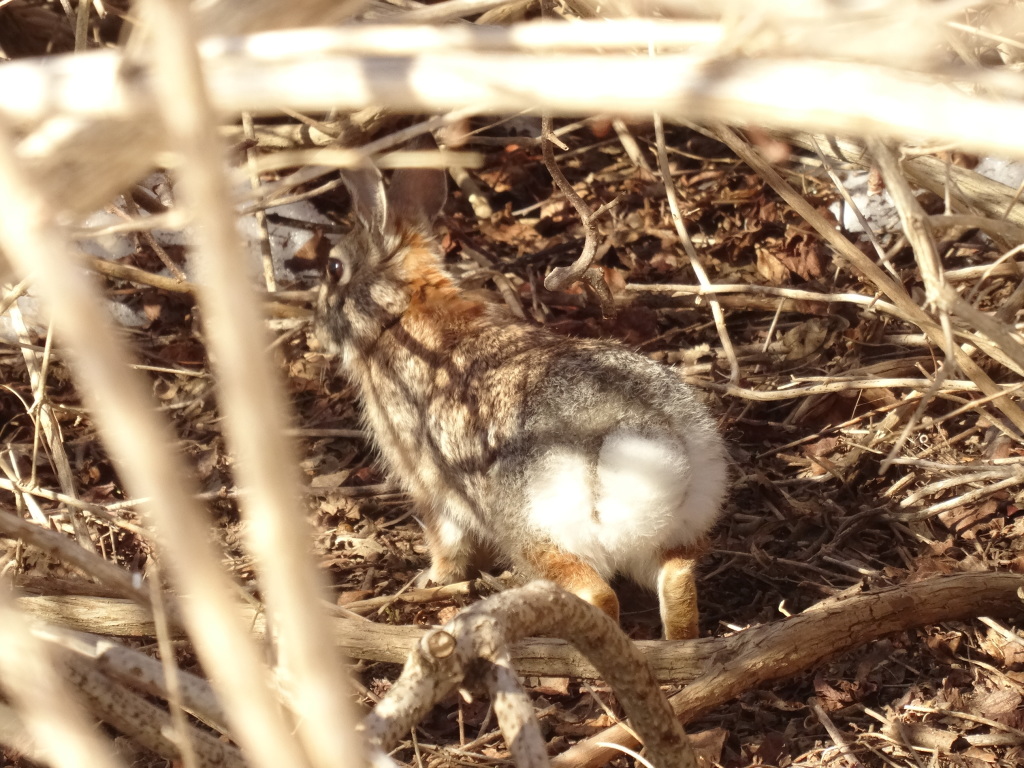 The shrubs and vines are showing life and were full of birds…
The shrubs and vines are showing life and were full of birds…